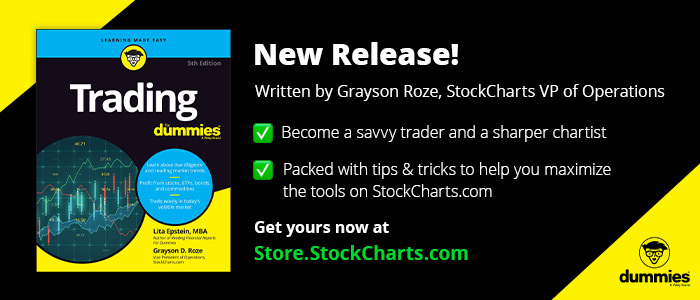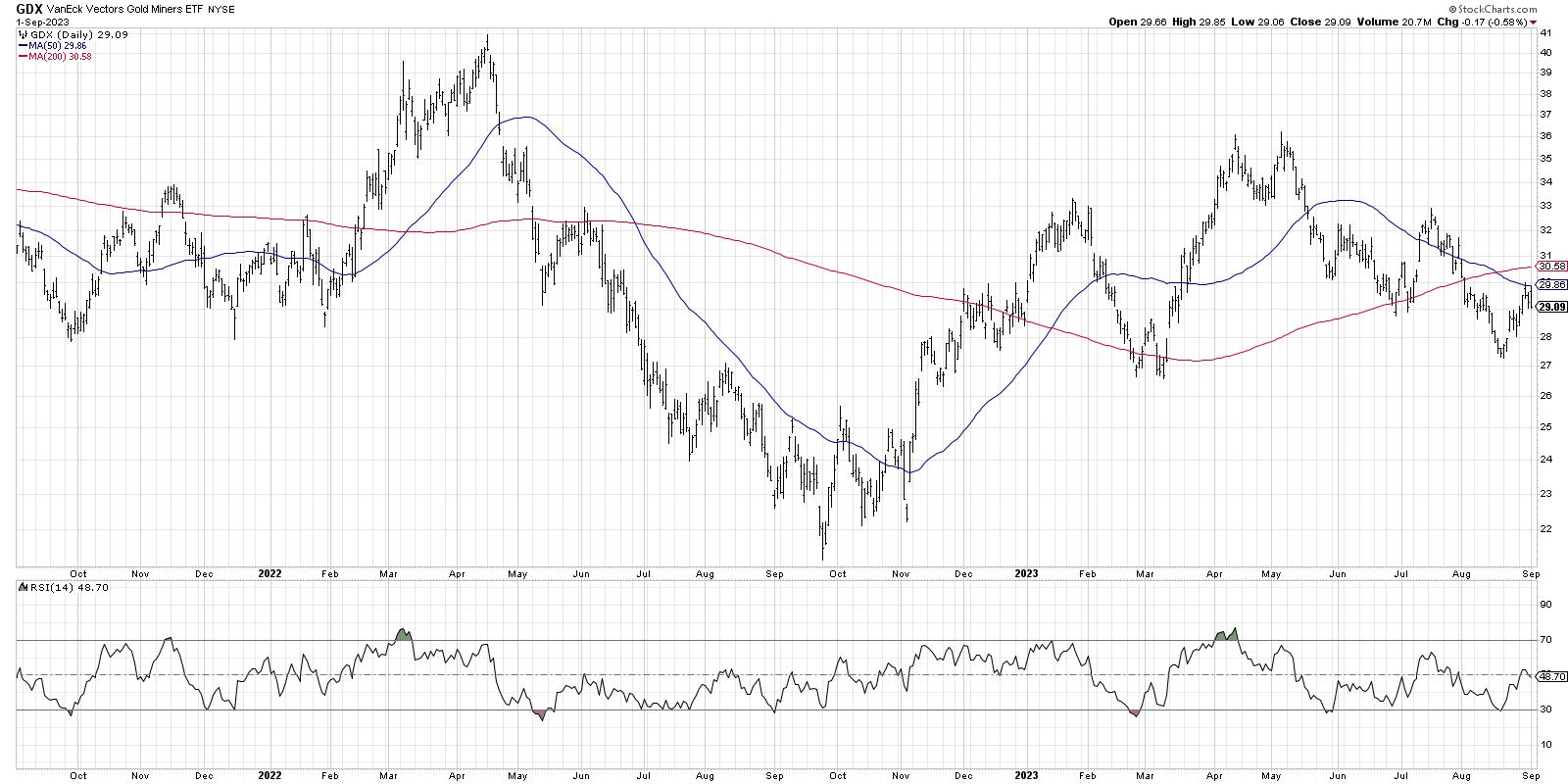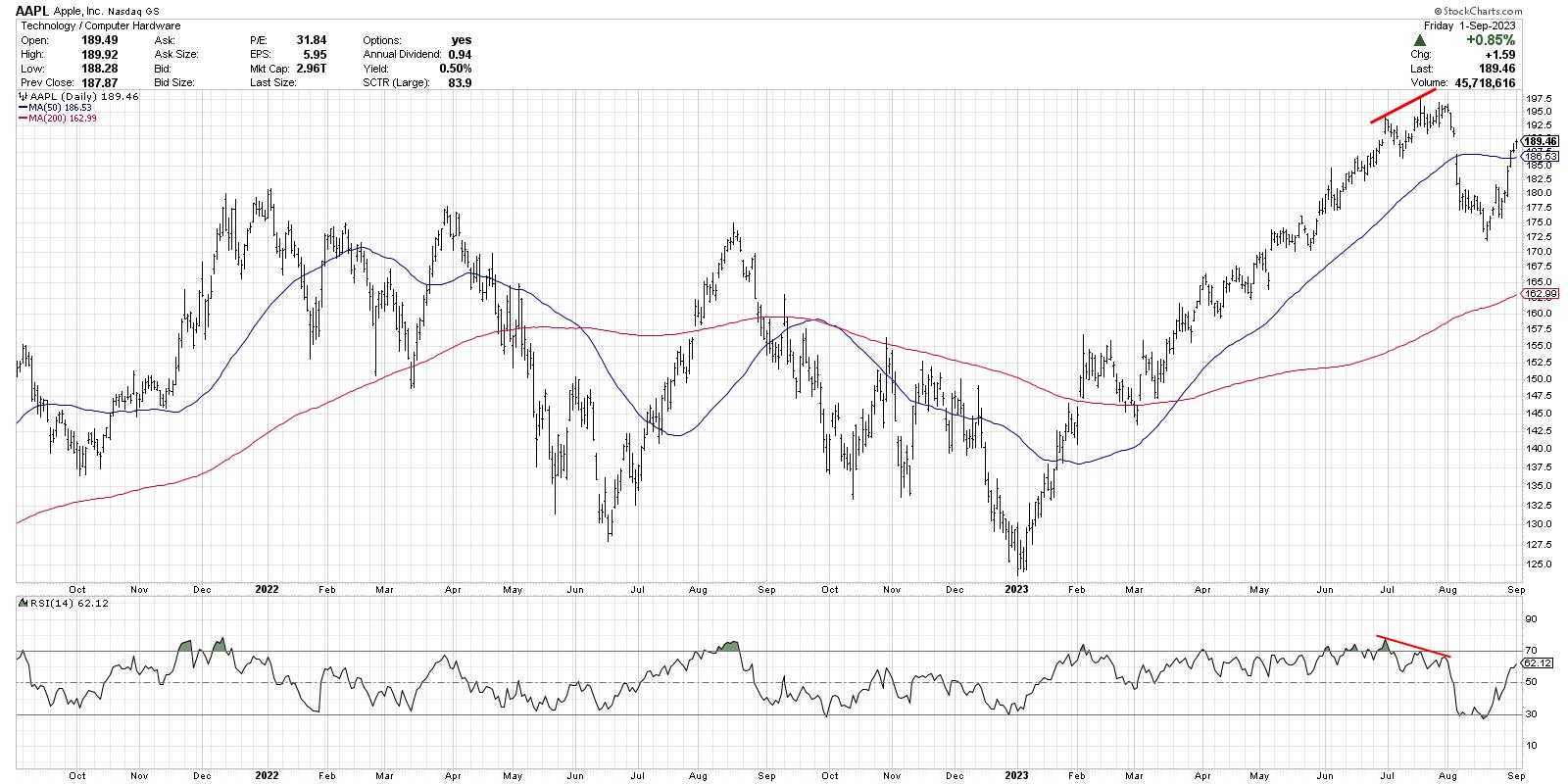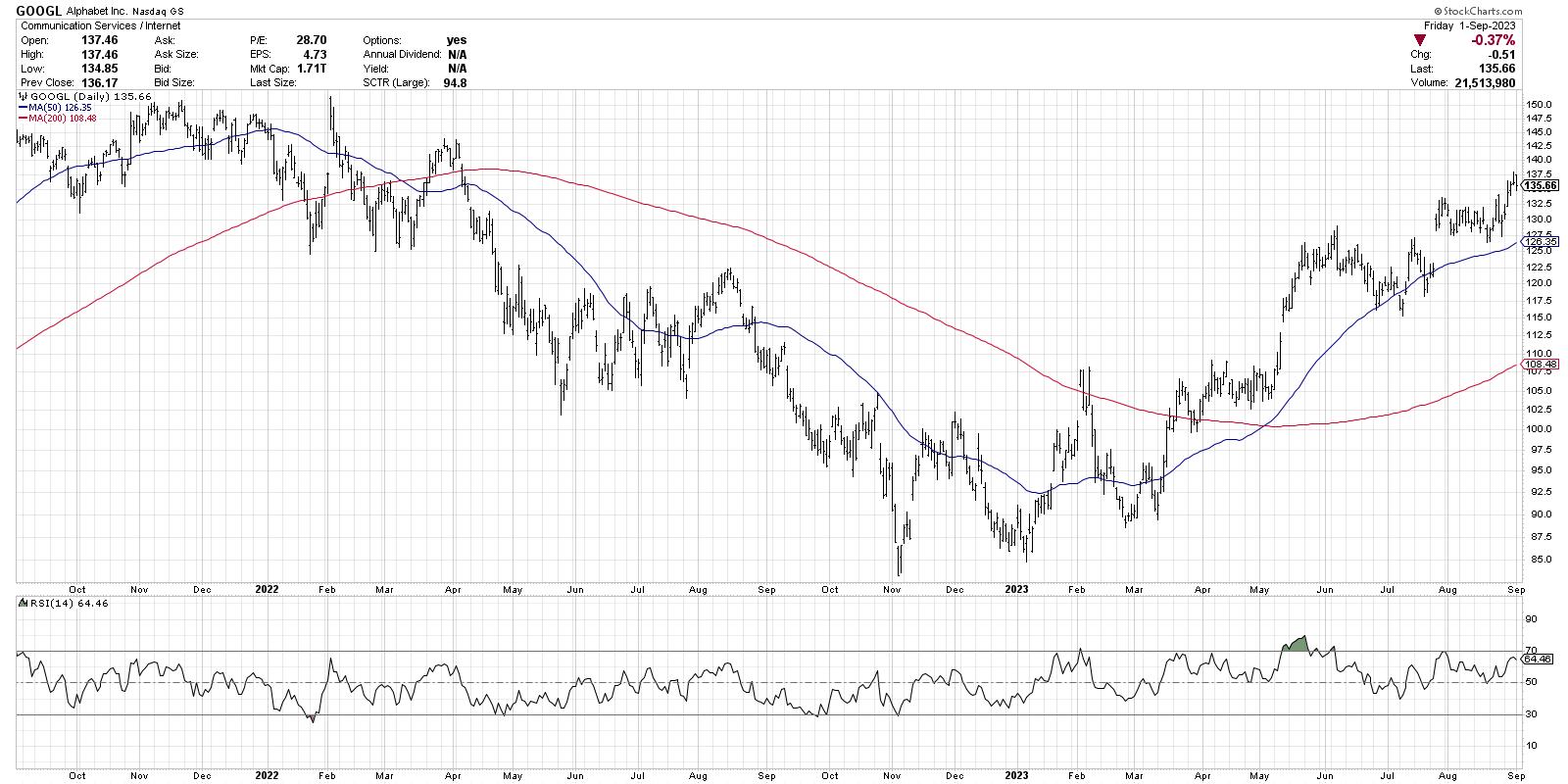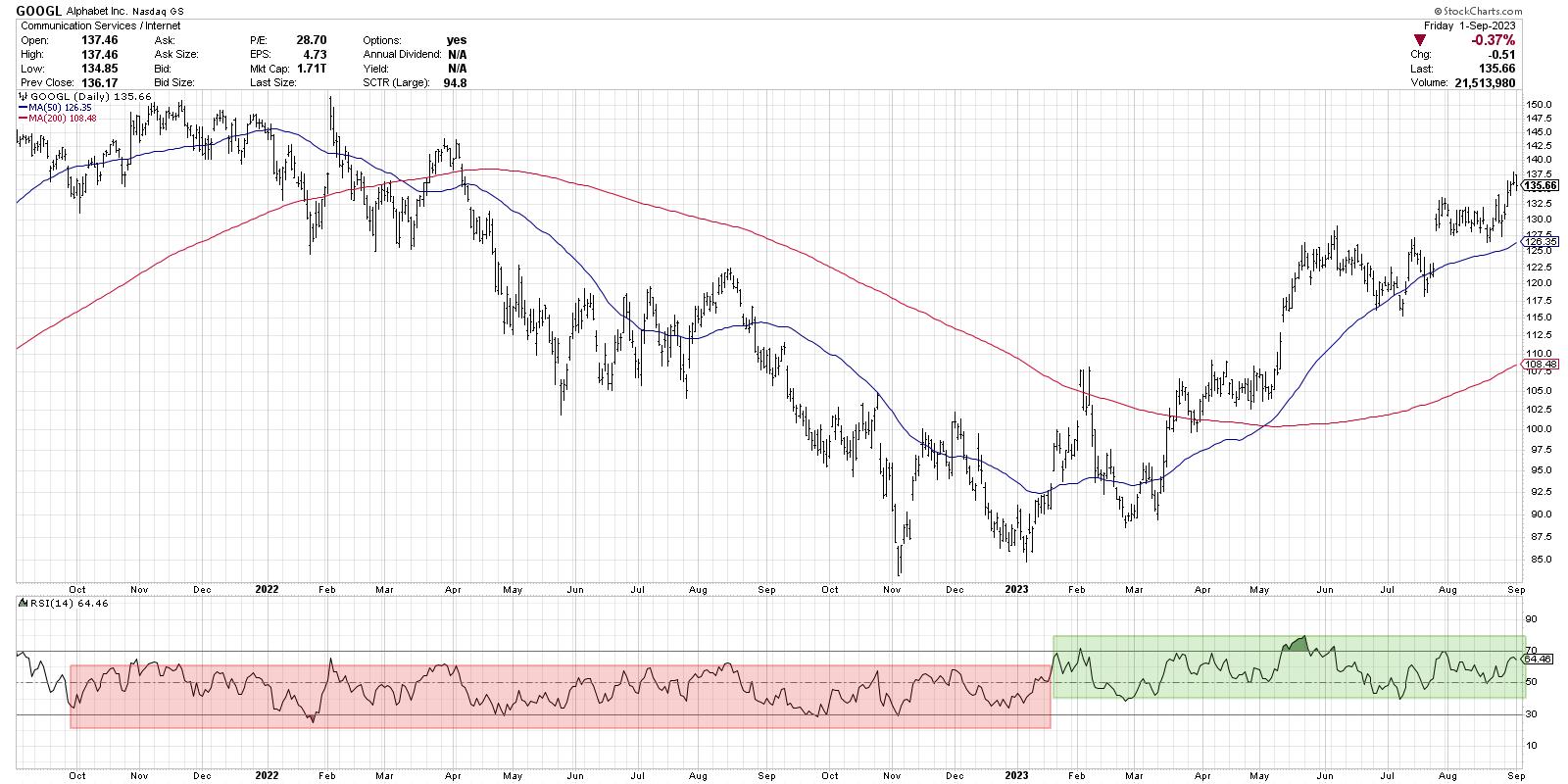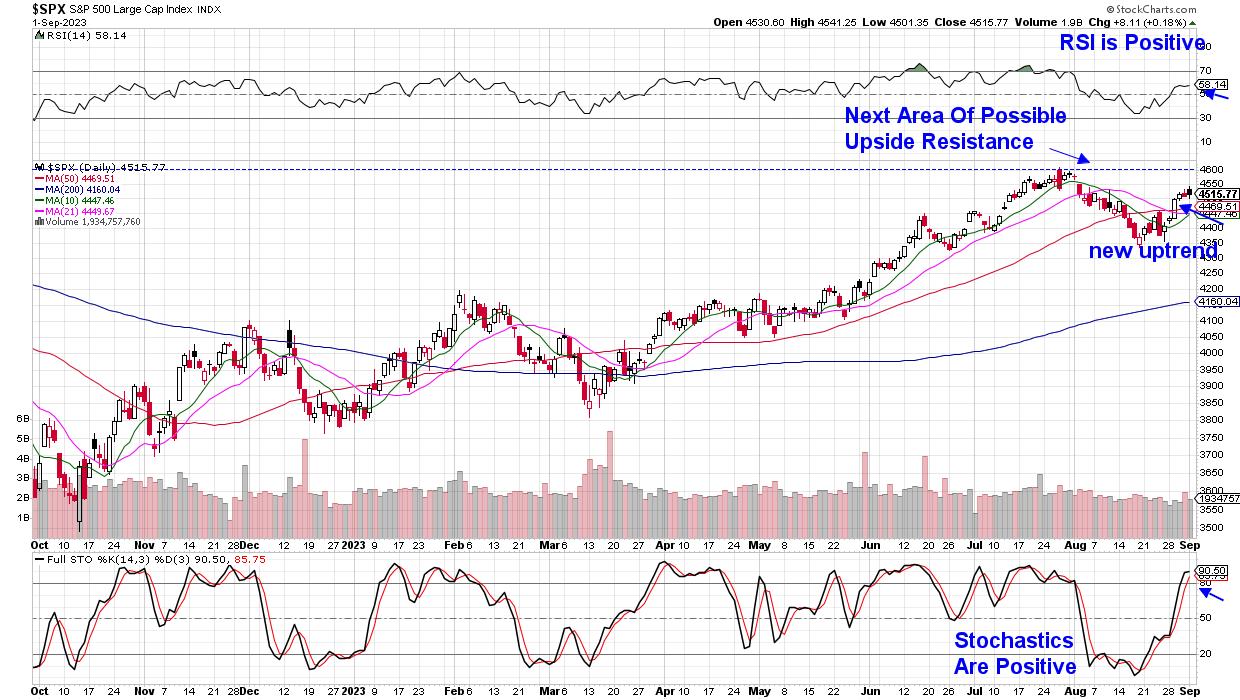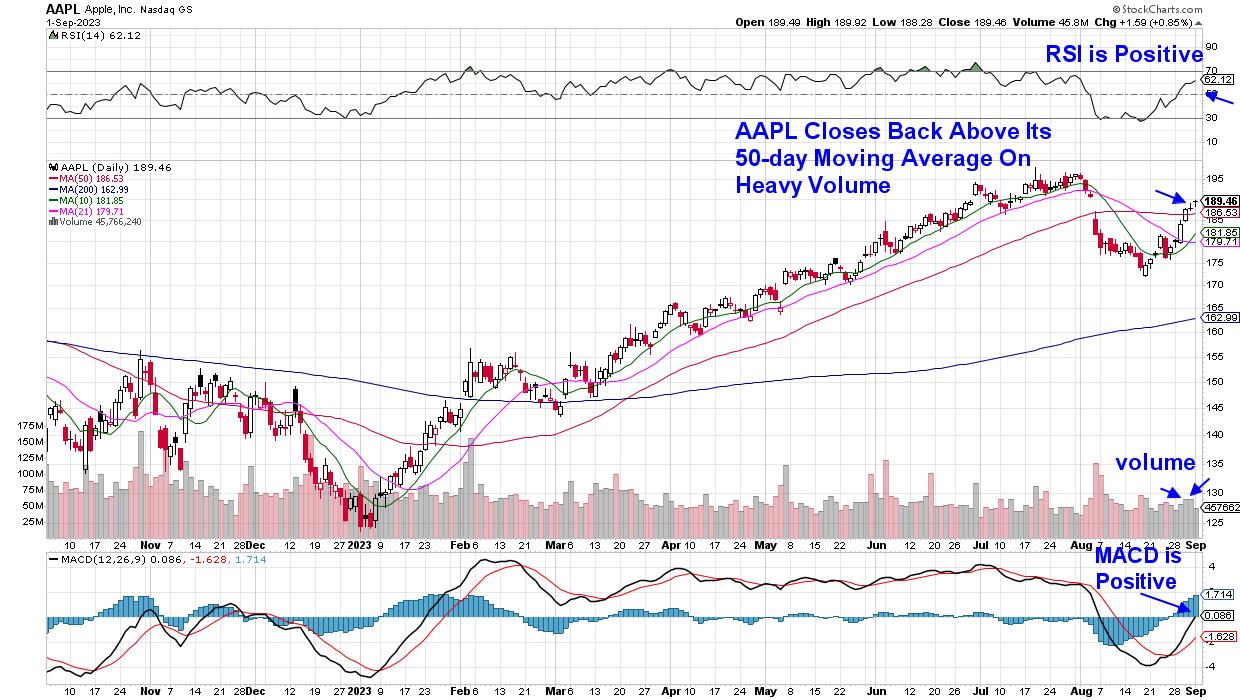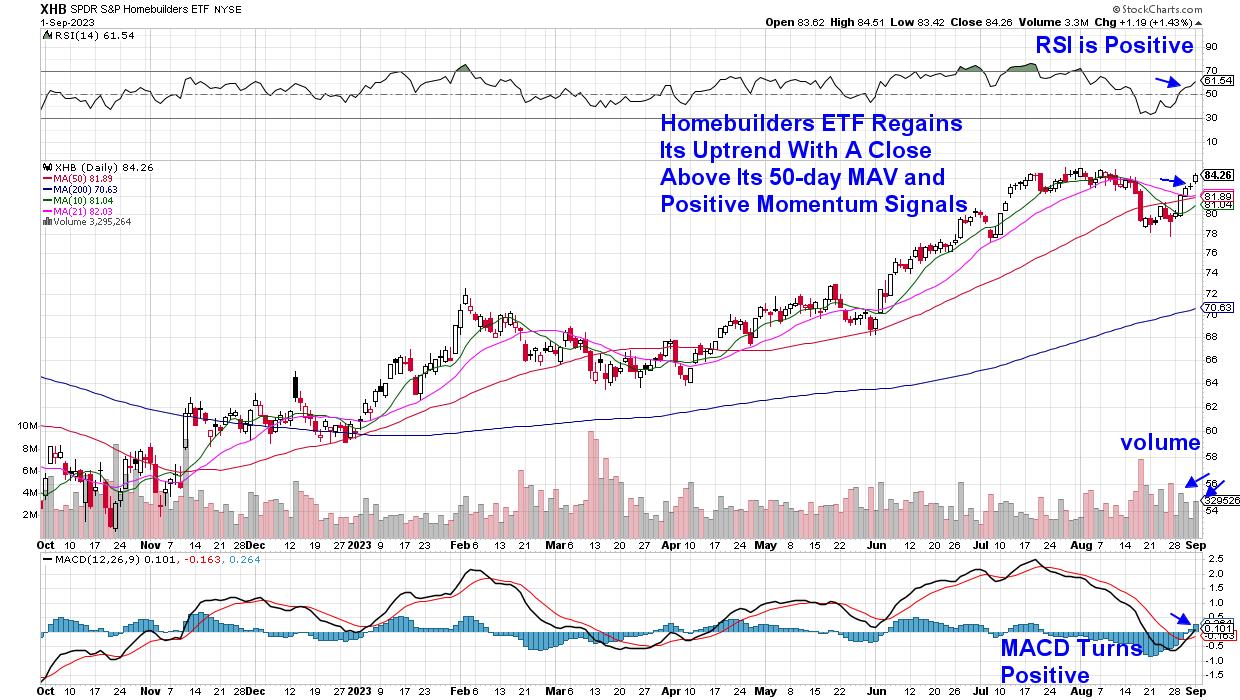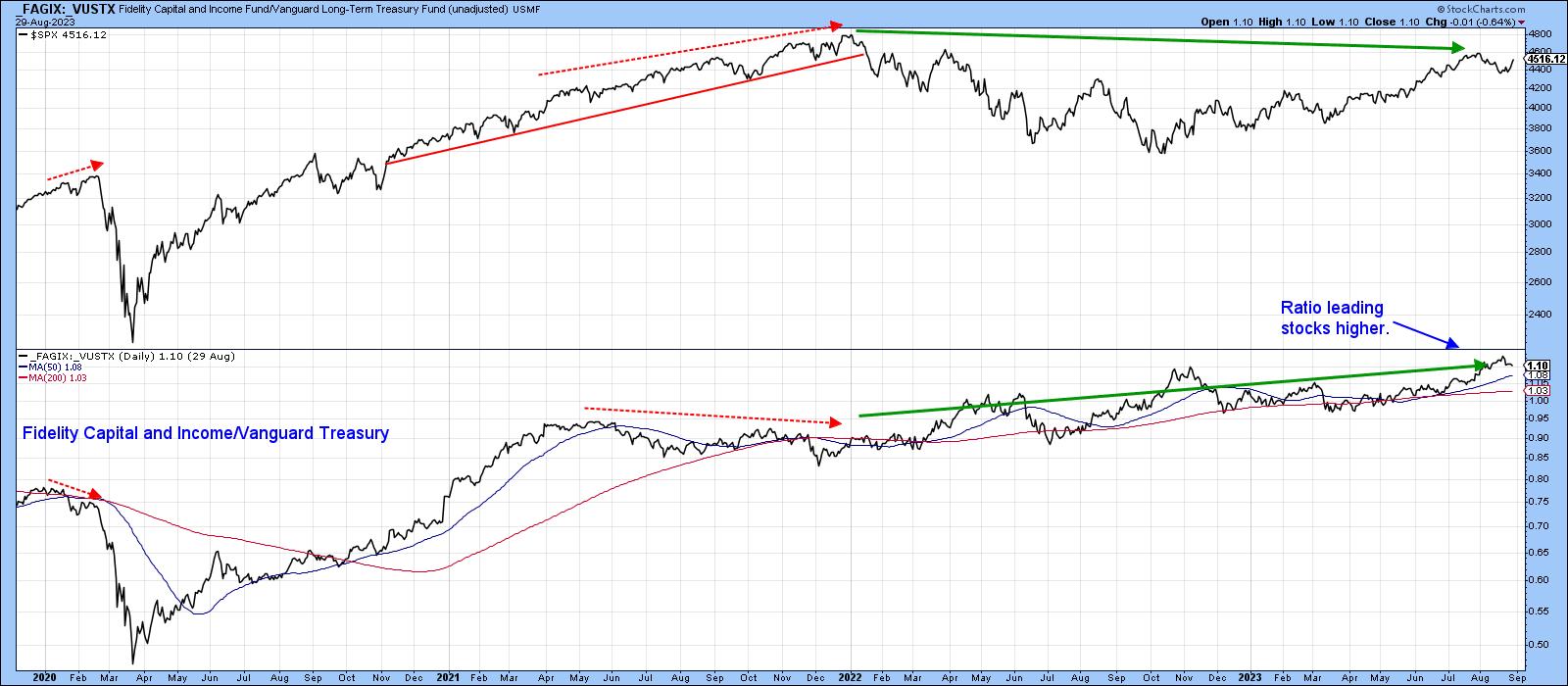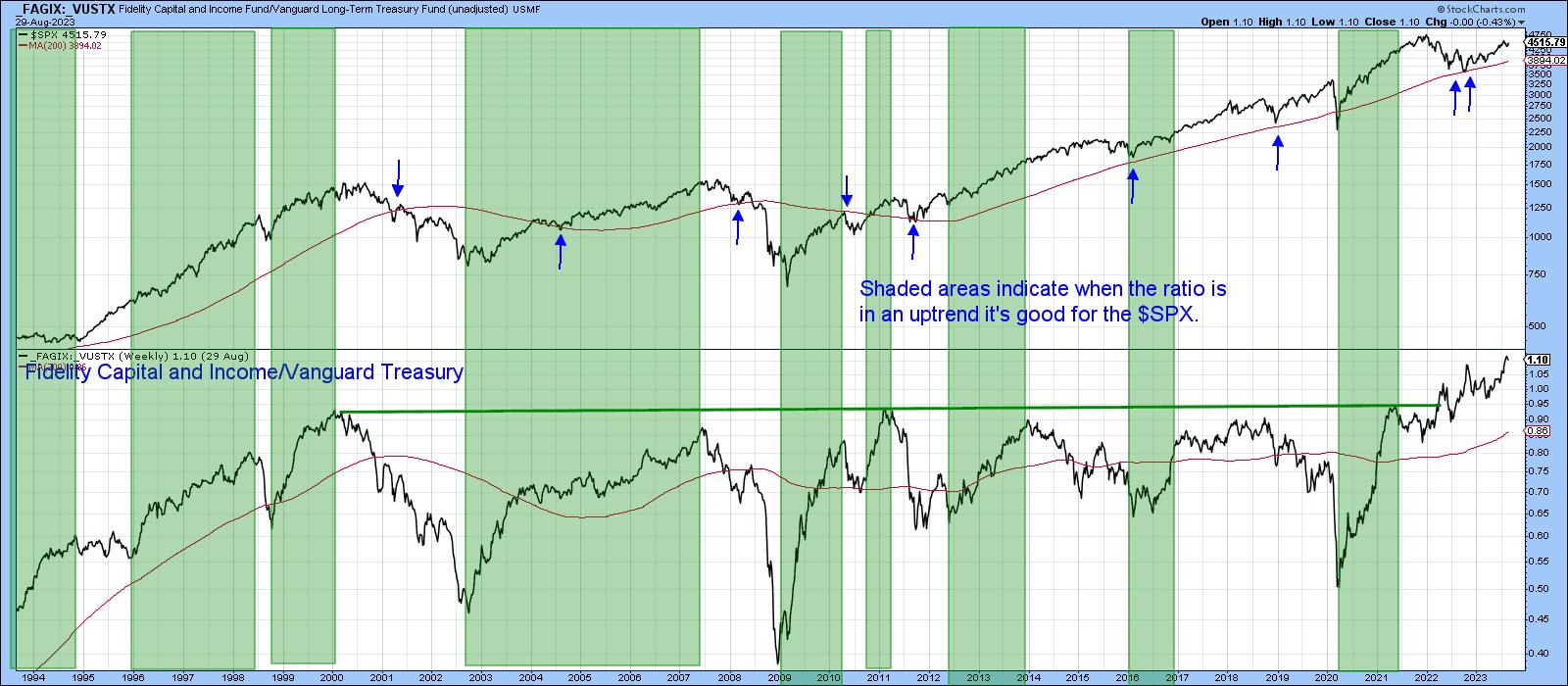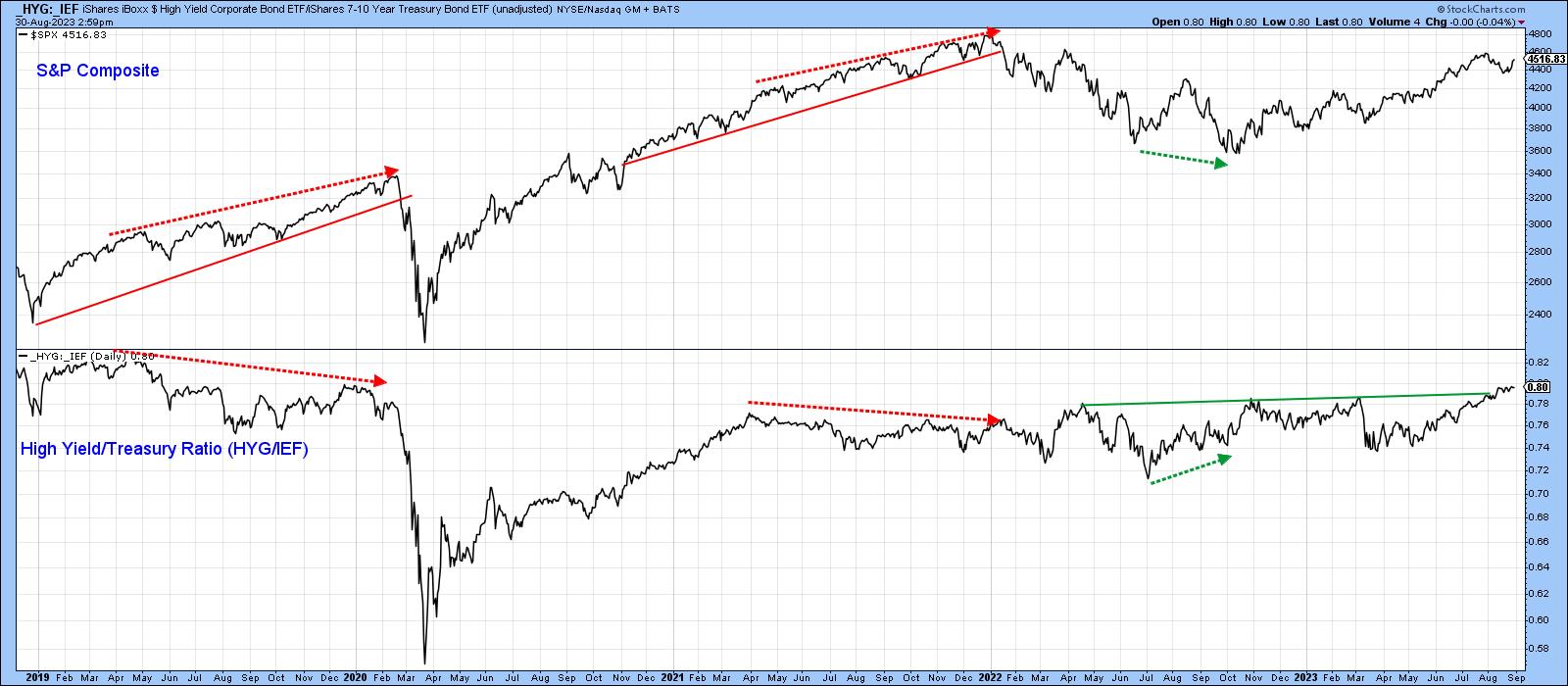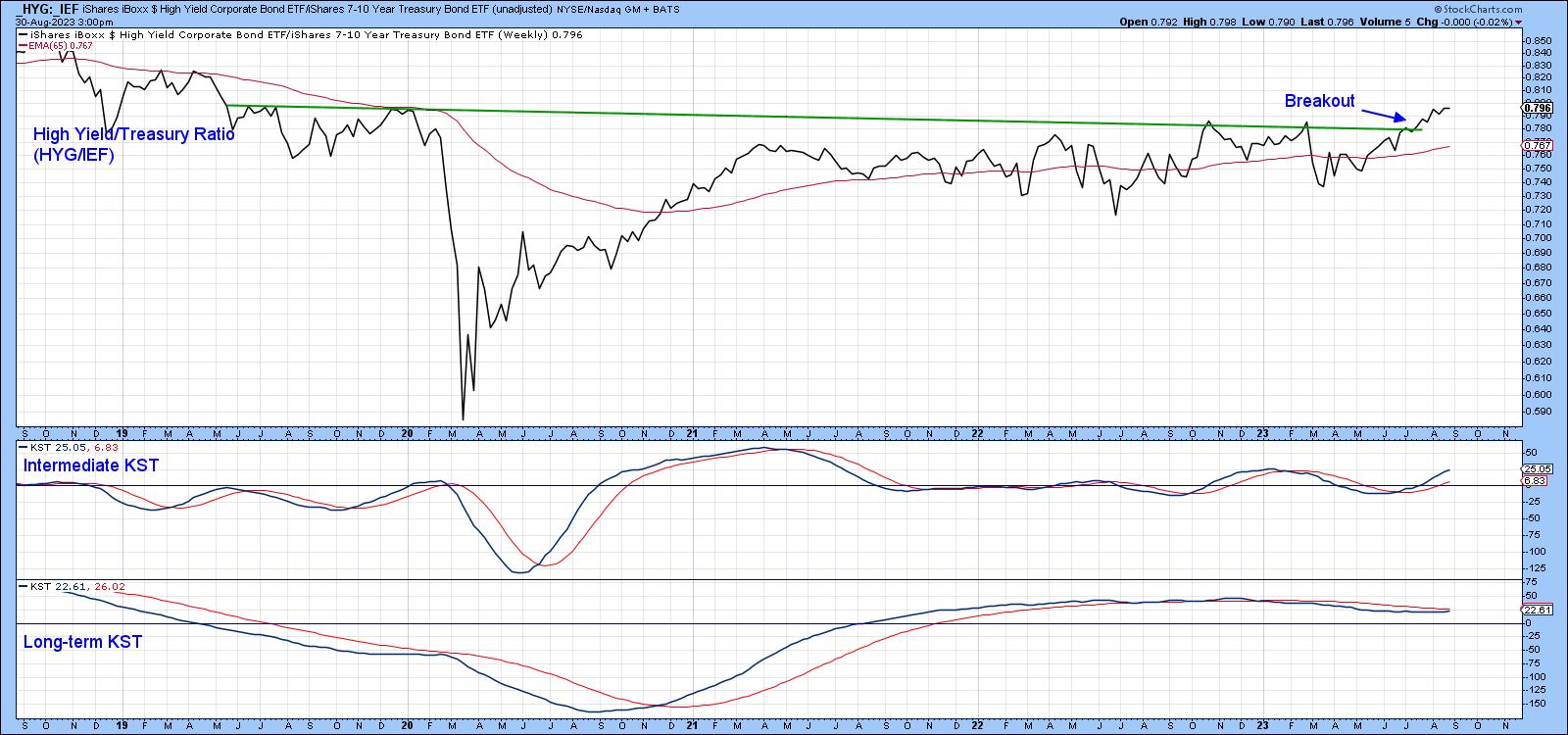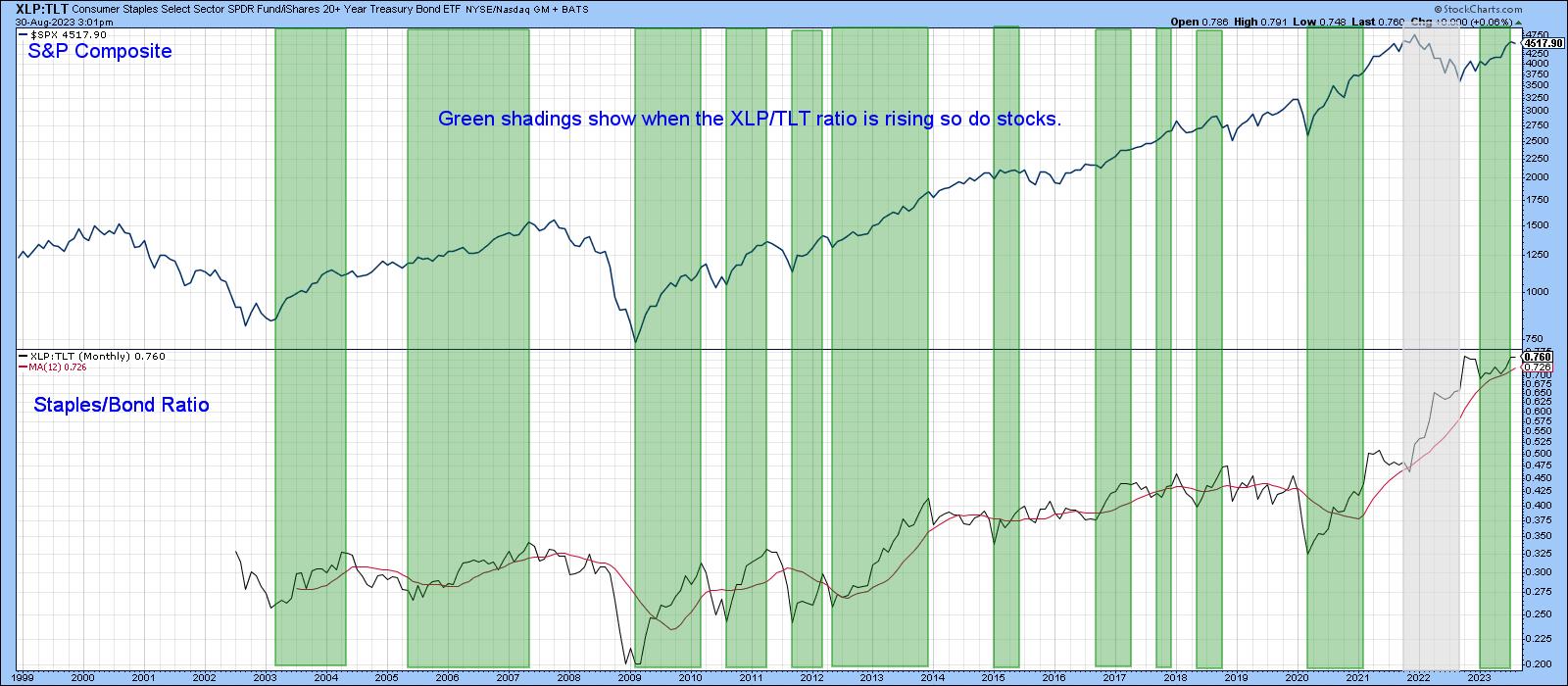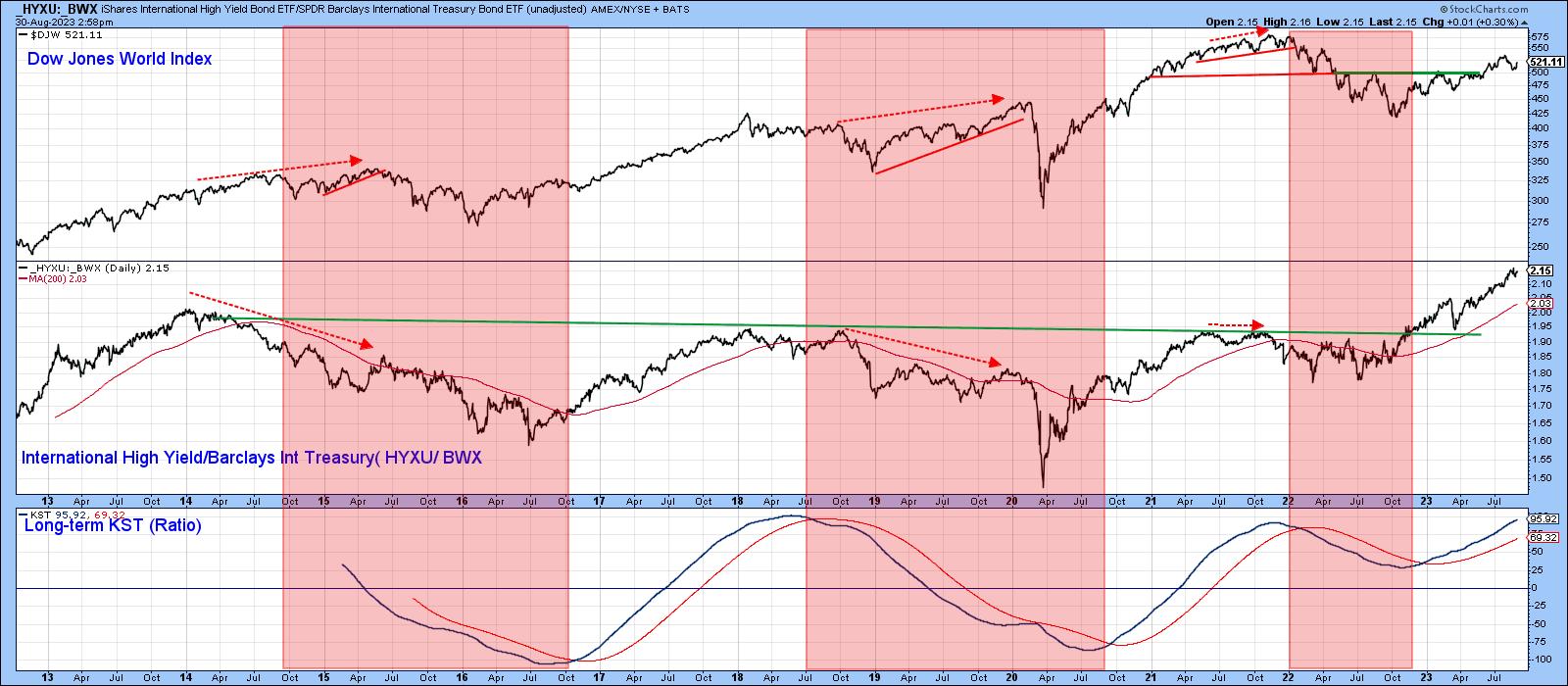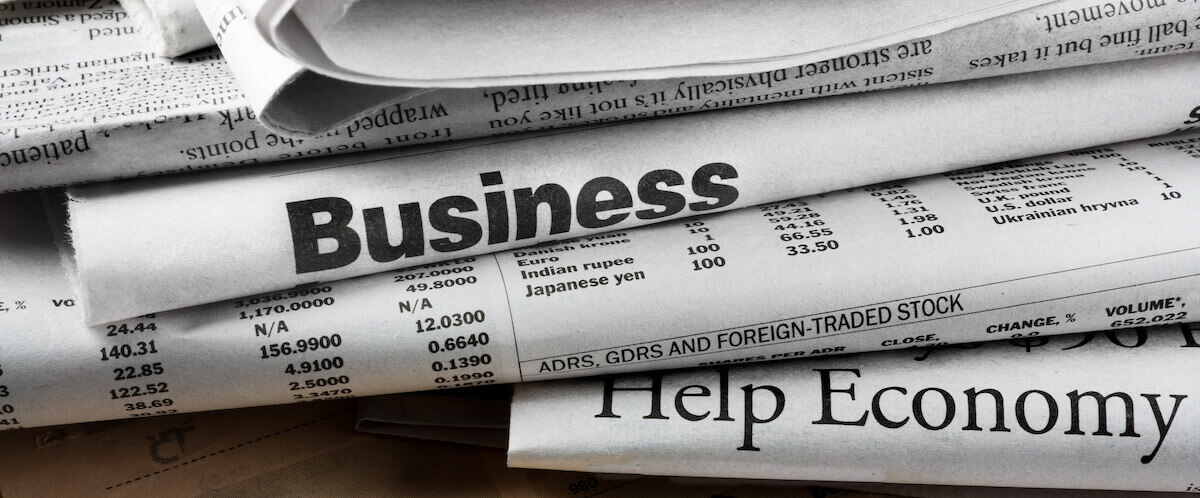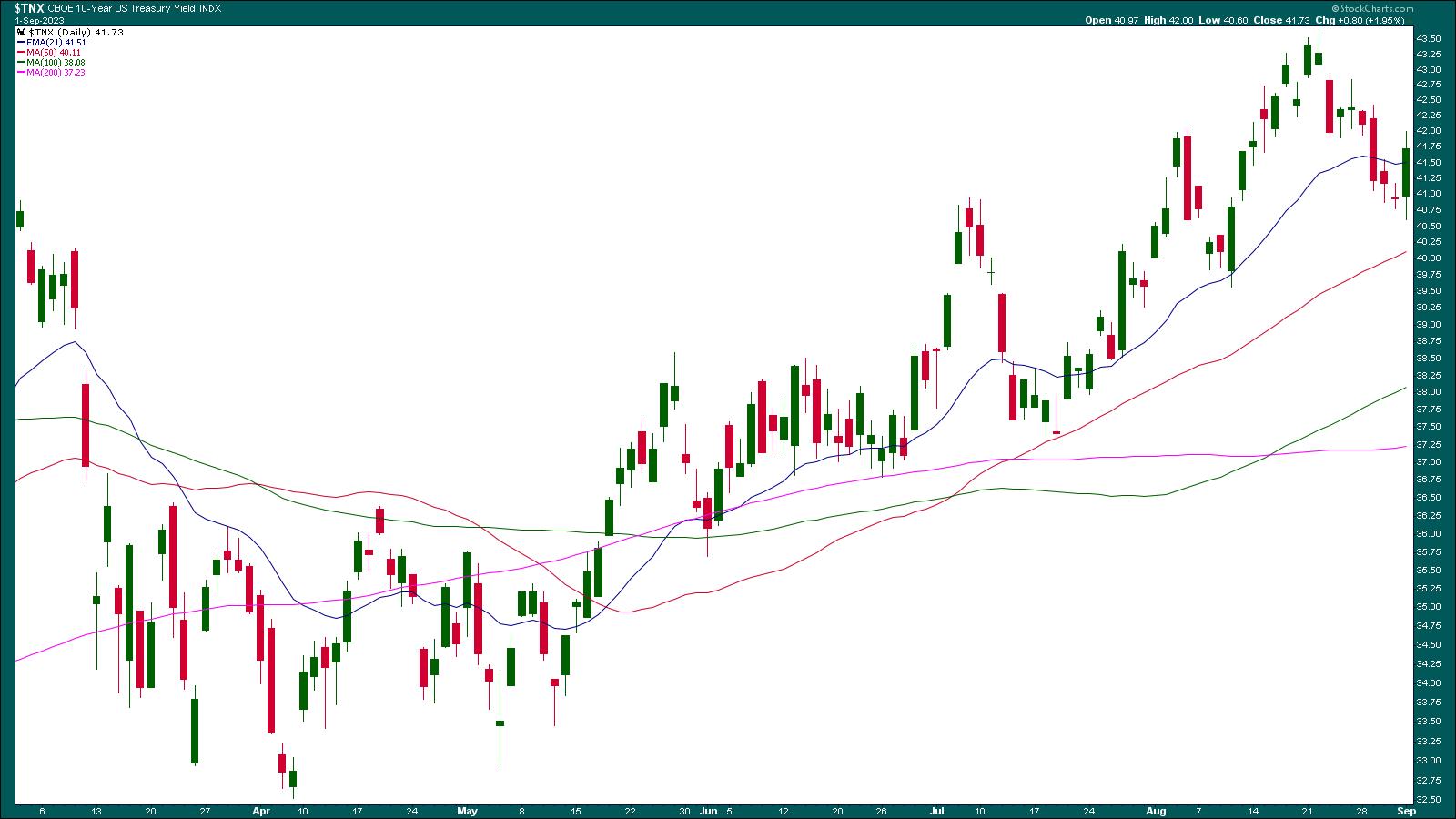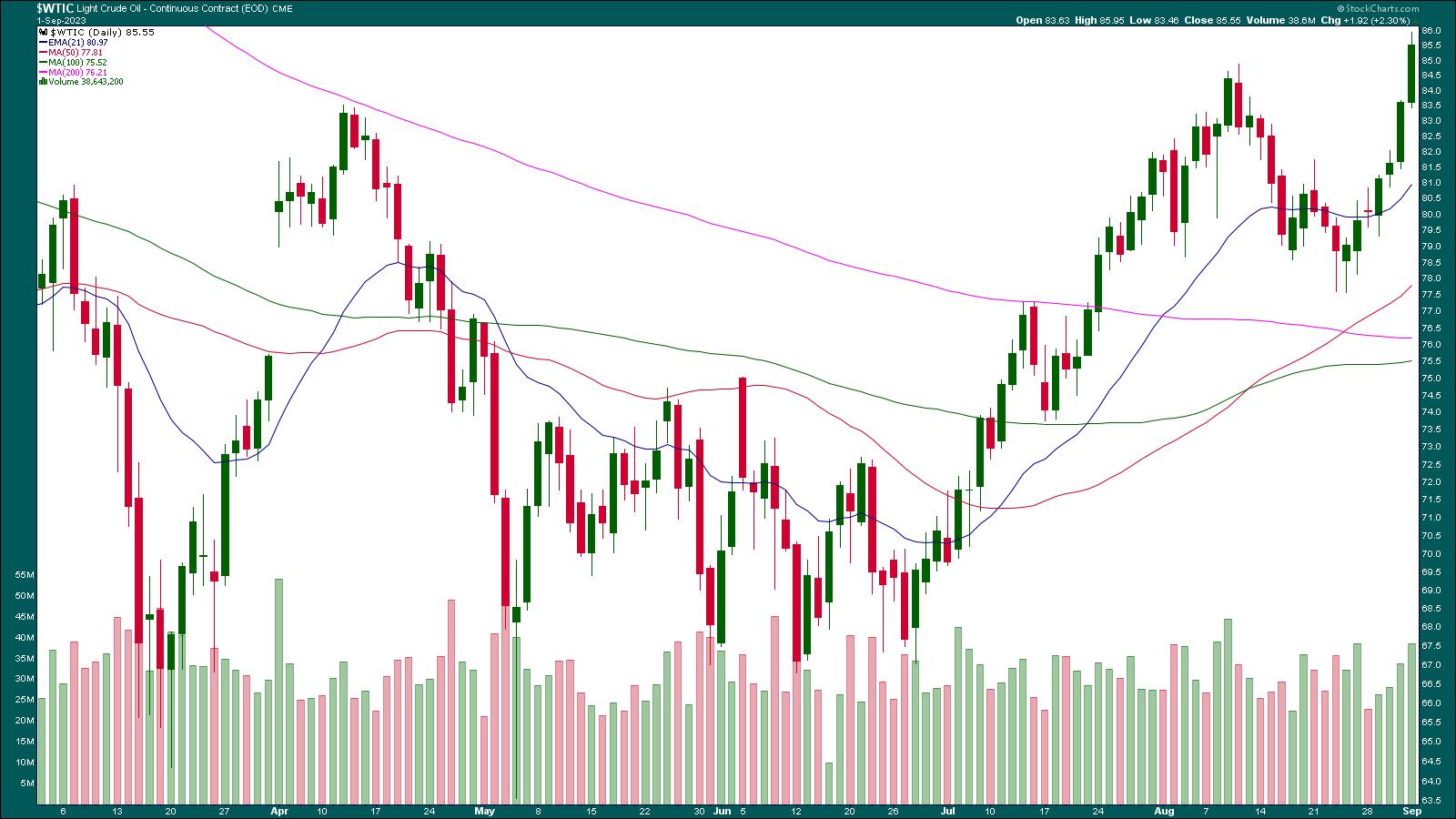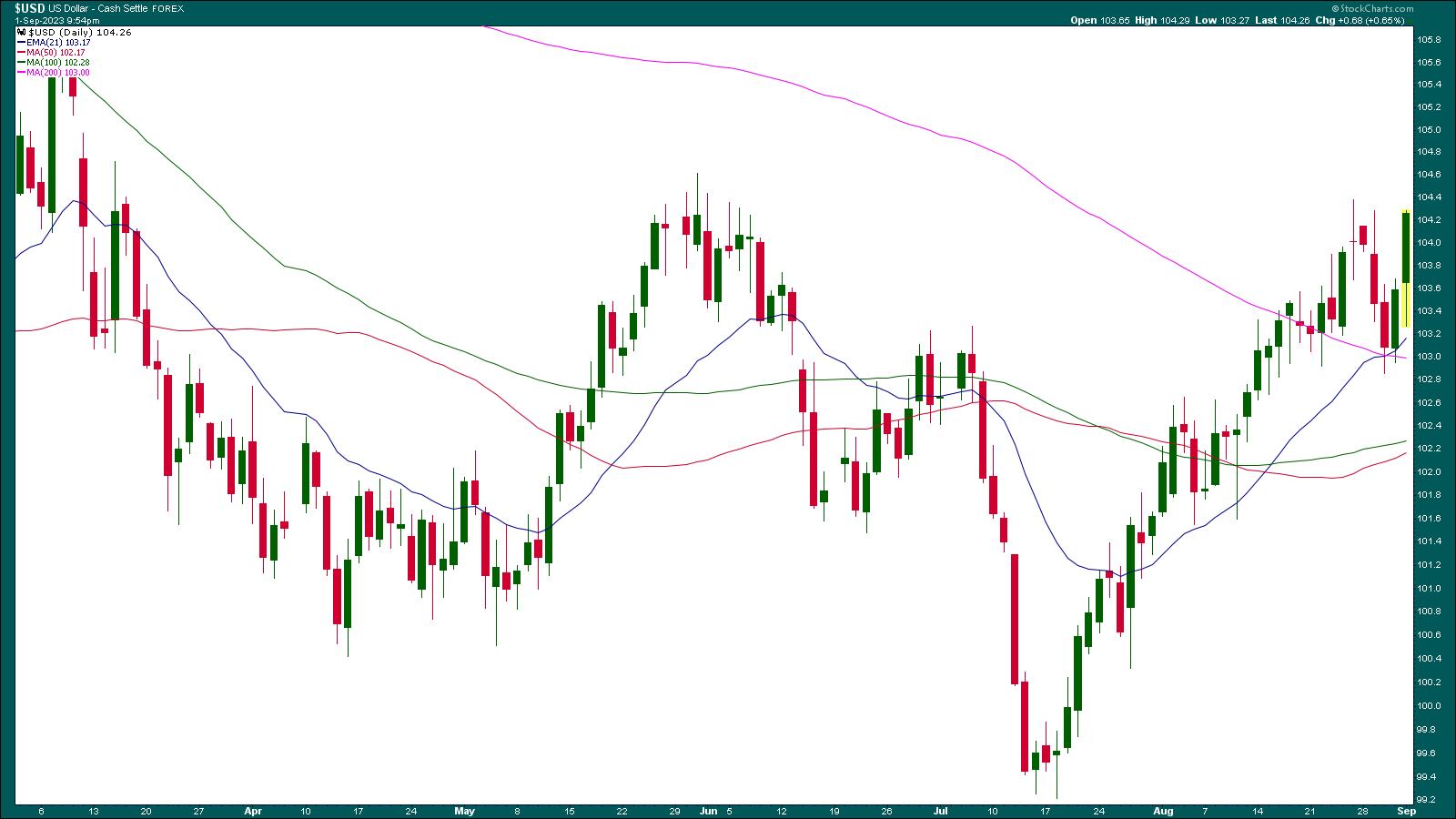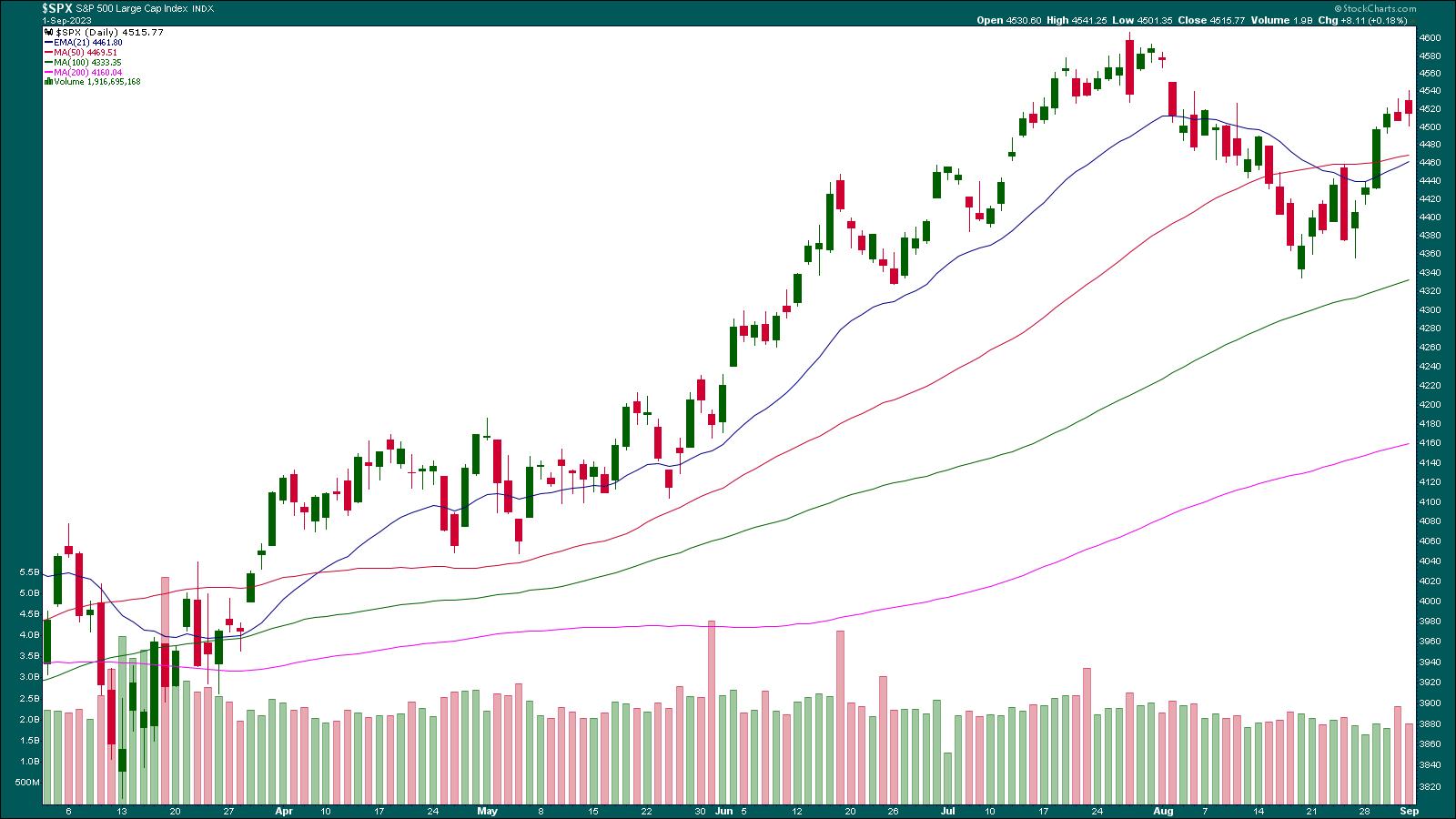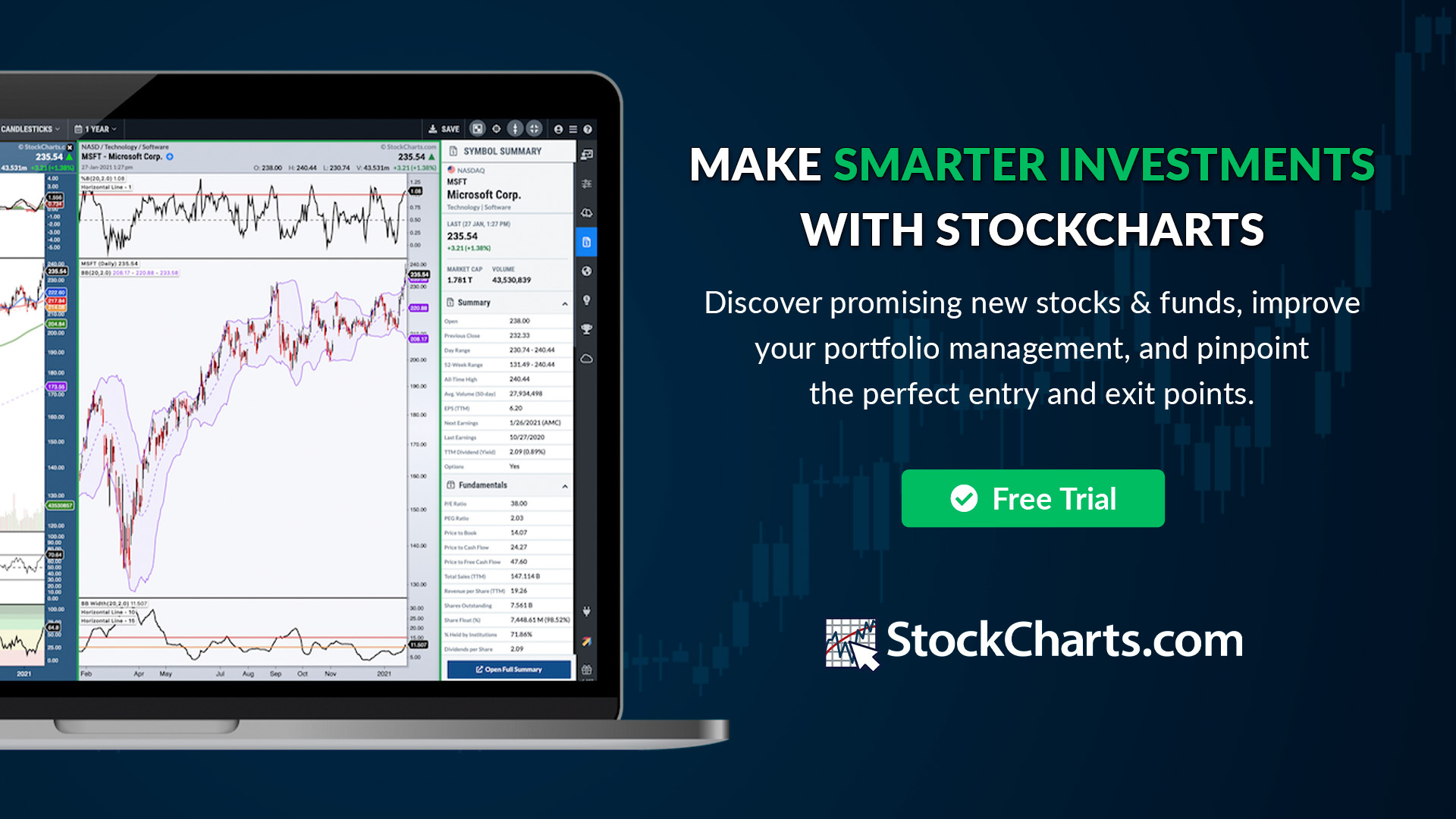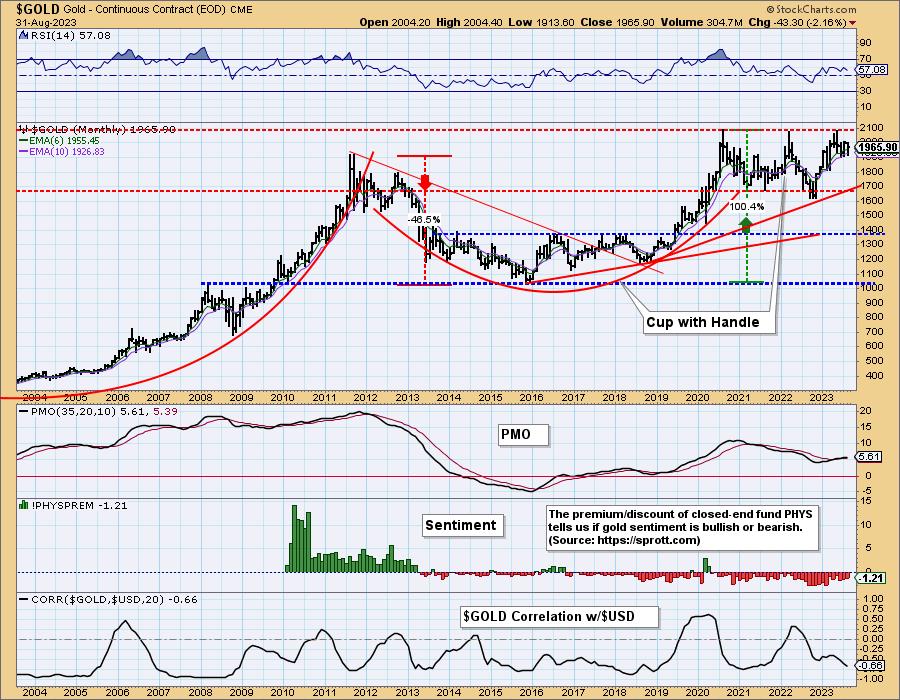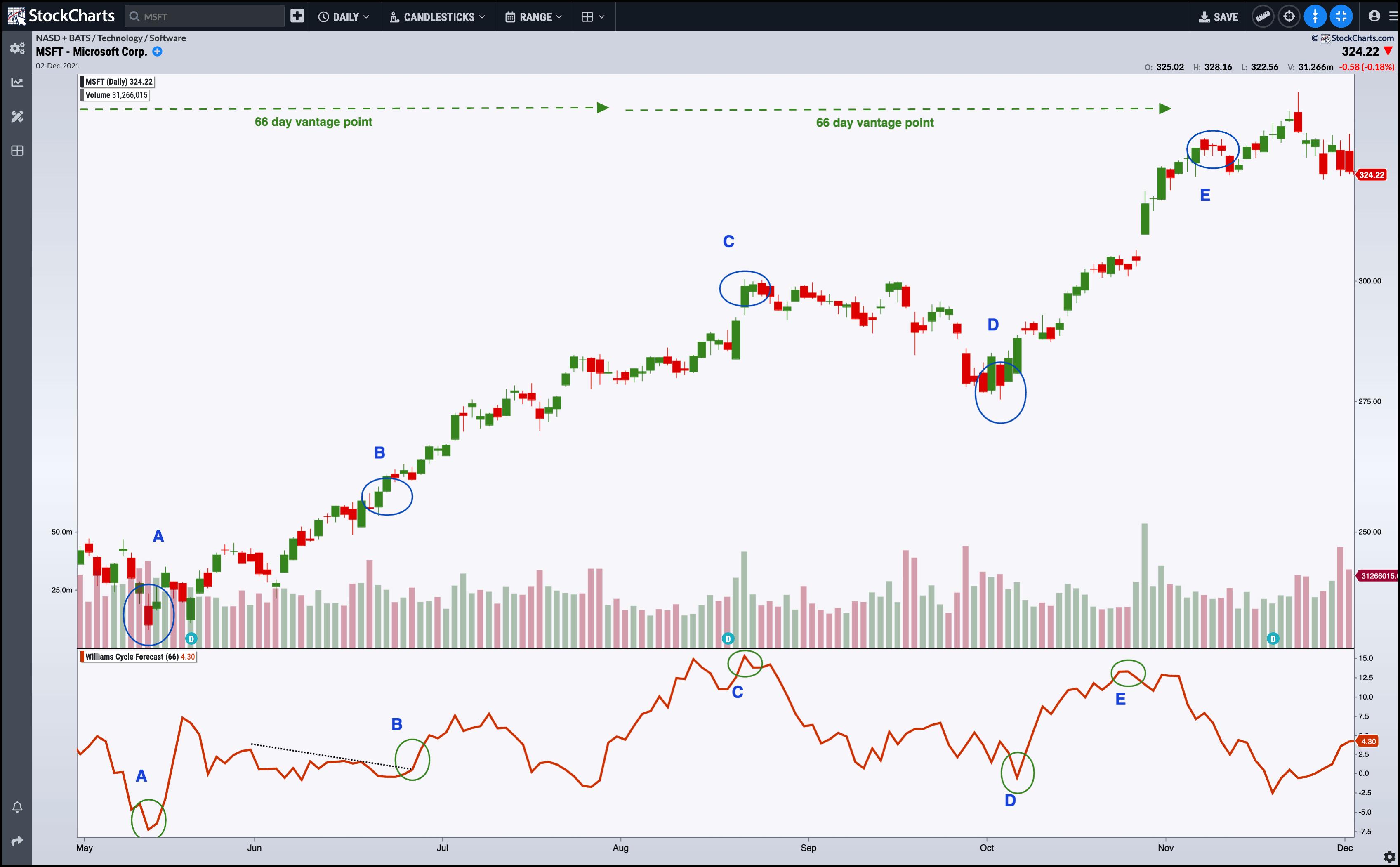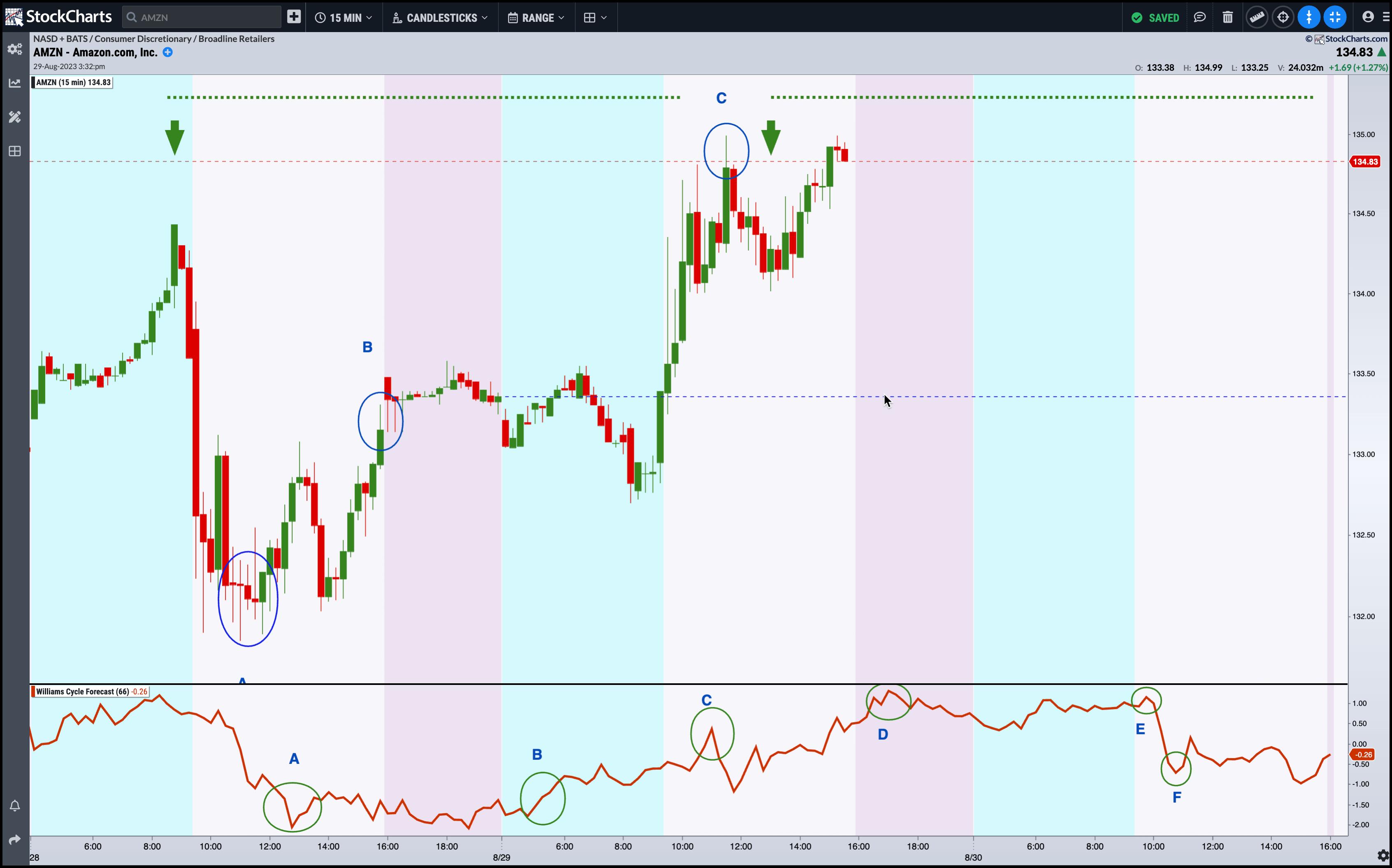Cycle Deep Dive
At times, it seems there are as many cycles as there are traders. I have been focusing on the shorter-term ones, those ranging from 2 to 5 years.
Recently, I pondered on the clear fact that cycle forecasts work far better to spot market bottoms than tops. Do we need different math models for tops? Perhaps, so I have started working on that.
In the meantime, I began looking for longer-term cycles to help, and tumbled into something I had never seen before... the existence of an 8.7-year wave. Here it is.
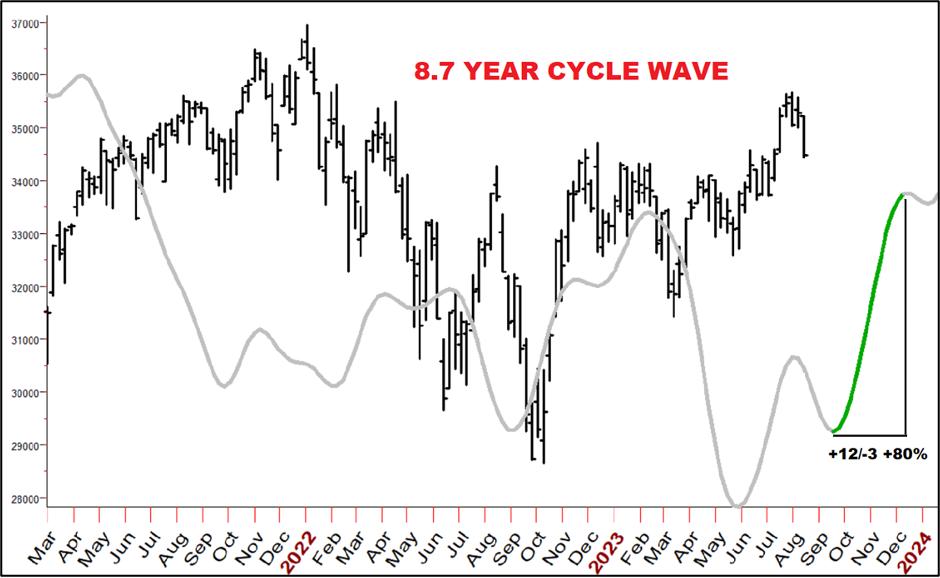 Chart 1: DJIA 8.7-Year Wave
Chart 1: DJIA 8.7-Year Wave
As we see in Chart 1, this wave provided an early warning for the 2022 top. Since then, the Dow Jones has mimicked the wave pattern. Of particular interest to me is that, just like with my shorter cycle work, this one is telling us to prepare for an advance to begin in mid-September. 12 of the 15 times this pattern has appeared, it has been very bullish... 80% of the time. More confirmation of what we have been looking for.
Shown next are the three times the wave was not successful. These give us more insight into what may happen and how we can respond.
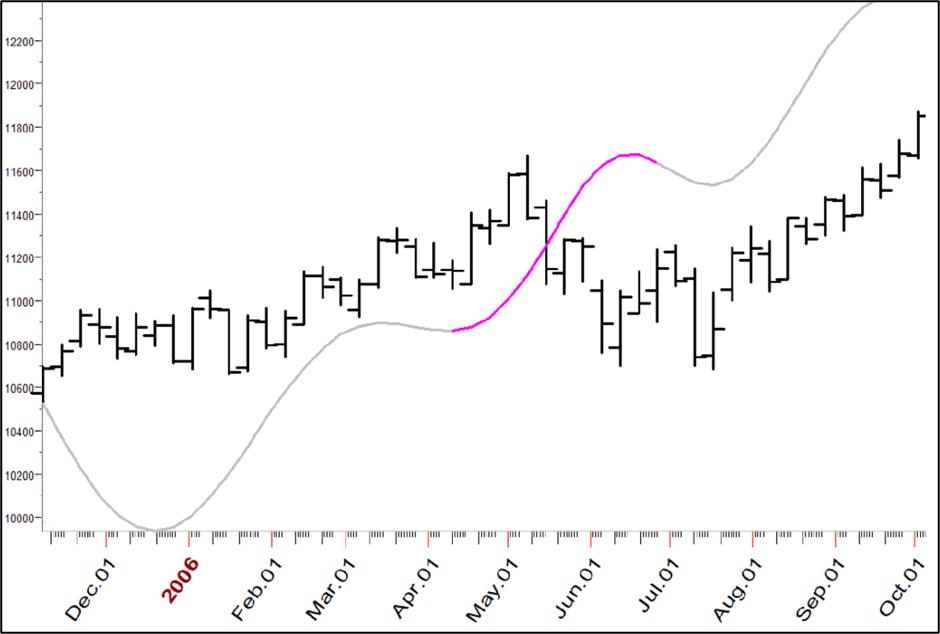 Chart 2: DJIA 8.7-Year Wave 2006
Chart 2: DJIA 8.7-Year Wave 2006
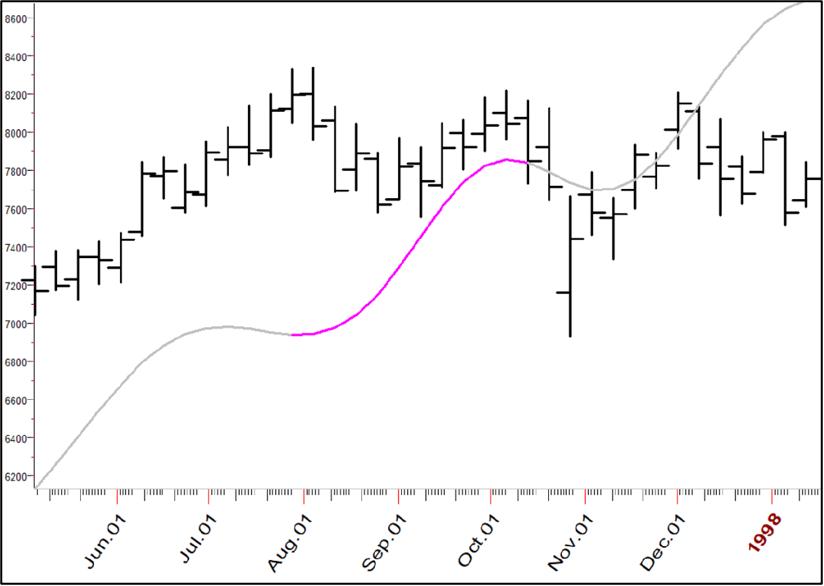 Chart 3: DJIA 8.7-Year Wave 1998
Chart 3: DJIA 8.7-Year Wave 1998
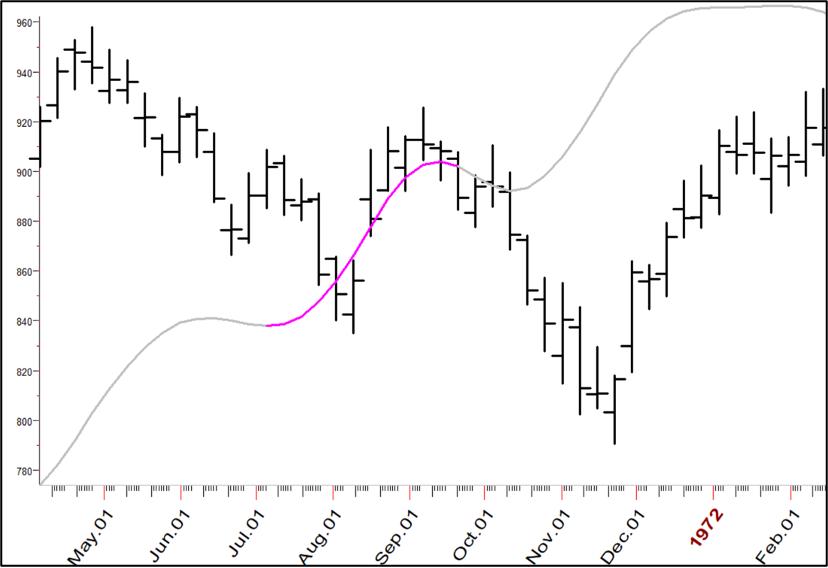 Chart 4: DJIA 8.7-Year Wave 1972
Chart 4: DJIA 8.7-Year Wave 1972
Taxes, Recessions, and Reality
Several economists are saying we are, or shortly will be, in a recession, based on the decline in Federal Tax Receipts.
Chart 5 is from the FED, which appears to show that recessions correlate highly with taxes not coming into the Treasury. As a reminder, the grey vertical areas are periods of recessions.
 Chart 5: Fed Government Tax Receipts 1950-2020
Chart 5: Fed Government Tax Receipts 1950-2020
To get a better view of the relationship, Chart 6 gives an up close and personal view of the data from the late 1940s into the early 1960s.
 Chart 6: Fed Government Tax Receipts 1948-1963
Chart 6: Fed Government Tax Receipts 1948-1963
Looks pretty convincing, doesn't it? So, is it that we are about to enter a recession/bear market?
Well, anything is possible. Yet there is another way of looking at the data that, to me, suggests there is more to this than the above charts show.
Taxes are a Follower, Not a Leader...
Now we look at what I think is the truth of the matter, one that makes more sense. The bears are saying a downturn in receipts shows the economy has turned down. I agree. But it would be more important, it seems, to find the driving force of receipts. After all, the data above is released each quarter, so there is a delay of consequence here.
To me, the best forecast of Tax Receipts is... the stock market. This makes more sense; stocks rally when business is good, and good business means more tax money flowing to Uncle Sam.
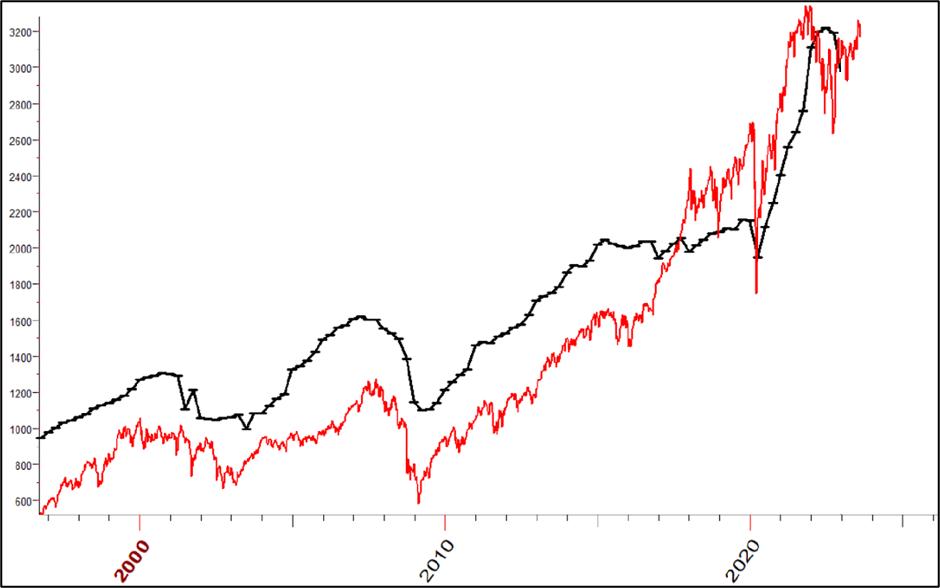 Chart 7: DJIA vs. Tax Receipts
Chart 7: DJIA vs. Tax Receipts
Here's the proof. In Chart 7, I have overlaid the Dow (in red) vs. Receipts, and pushed the Dow forward 4 months. As such, it has been as good as it gets in the world of forecasting to predict the flow of tax funds. Currently, stocks have been rallying, telling us receipts will be picking up again. As I see it... receipts are not forecasting a recession. Stocks forecast receipts, not the other way around. Keep breathing, and the economy will continue muddling forward.
The Significance of the Decline in Inflation
The best economic news of 2023 is the peak in inflation. It has topped out, no two ways about that, and is on schedule with the downturn predicted last year.
Today, I want to focus on what have peaks in inflation meant in the past -- if anything.
To arrive at some idea of what the abatement of inflation means, I am sharing the standard 12-month rate of change in the CPI, posted with the Dow Jones Average, to see if there are lessons from the past to guide us into the future.
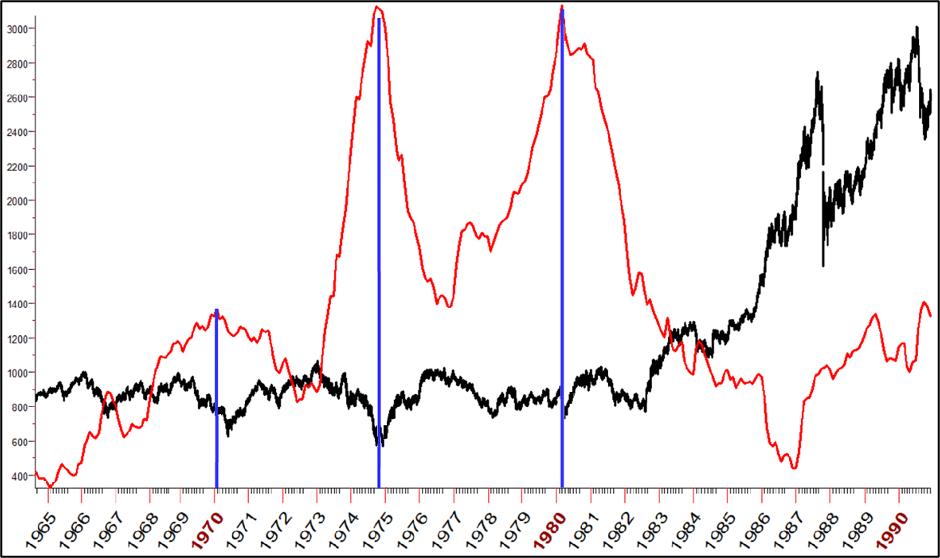 Chart 8: DJIA vs. Inflation 1965-1990
Chart 8: DJIA vs. Inflation 1965-1990
Chart 8 begins in 1964 and ends in 1990. This was a time of three distinct increases, then declines, in the CPI data. It looks to me like peaks in inflation have heralded in big bull markets that lasted until inflation turned back up. For over a quarter of a century, that appears to have been the pattern.
Have we found something here? What do the ensuing years teach us? Let's look and learn.
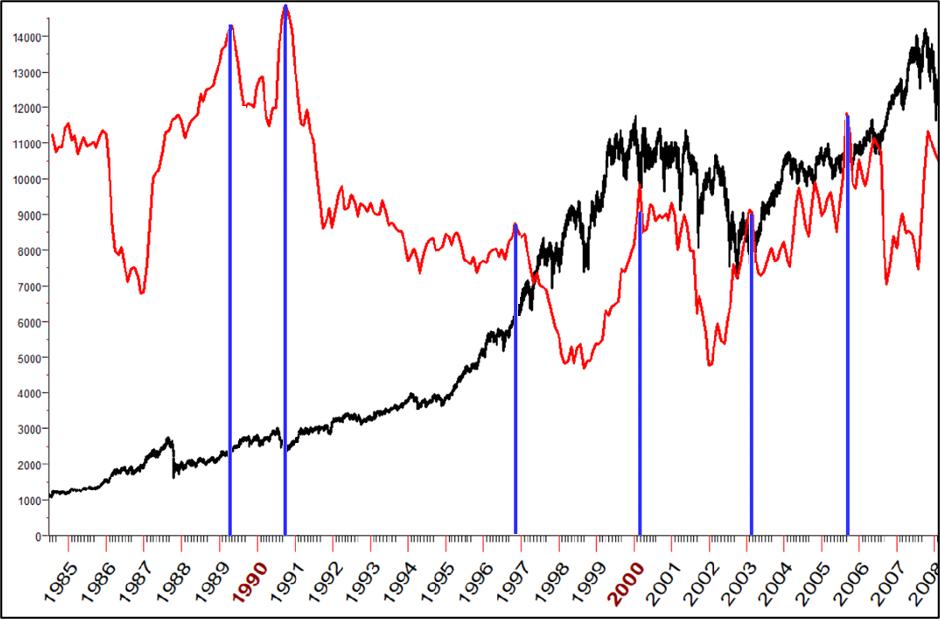 Chart 9: DJIA vs. Inflation 1985-2008
Chart 9: DJIA vs. Inflation 1985-2008
What I see is the same pattern... a peak in inflation kicks off major stock market rallies. The 2000 peak is the only exception over 40 years and 9 inflation bubbles.
Let's finish this off with where we are now.
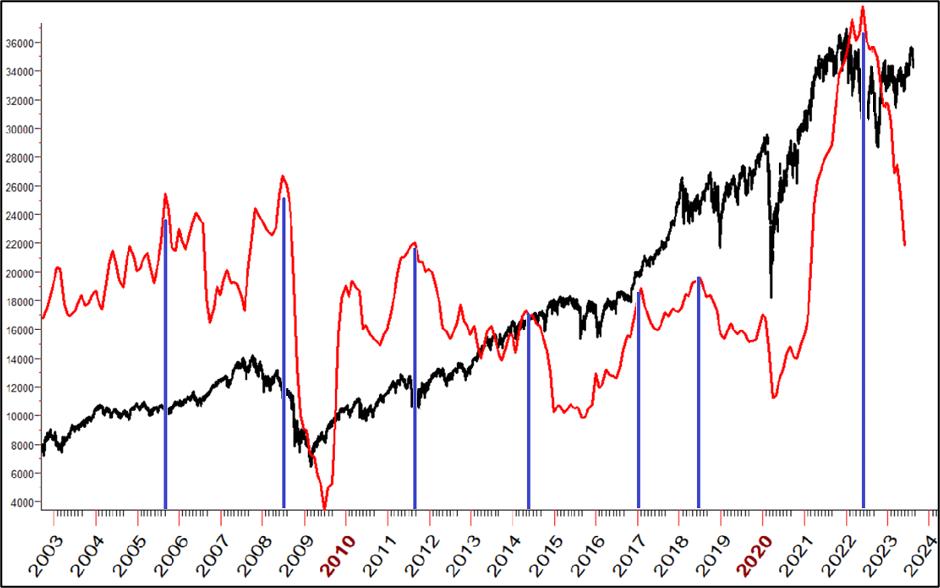 Chart 10: DJIA vs. Inflation 2002-2023
Chart 10: DJIA vs. Inflation 2002-2023
I don't know what you believe, but, speaking for myself, I believe inflation peaks (like we have just had) are very positive for stocks. Not just Positive for this week or month... but positive for a long time. Positive until inflation begins to rise again. This data suggests there is plenty of life left in the bull.
Fantasticks and September
The longest running play on/off Broadway was The Fantasticks. The play (well worth seeing) leads off with the Tom Jones song, "Try to Remember". The lead line, "Try to remember that time in September" may well have been written about the stock market!
Here's why; since the play opened in 1960, September has usually seen a spirited decline close to the end of the month. You don't need a playbill for this, just the data I am sharing here. The first clip shows the results of selling on the Xth trading day left in September over the last 25 years.
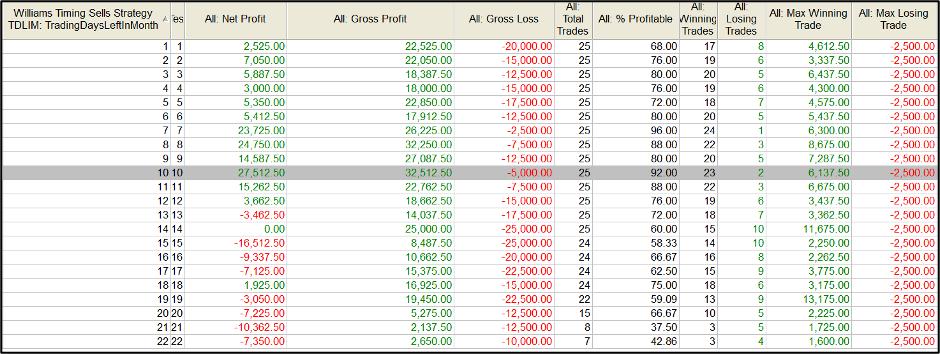 Table 1: S&P 500 E-minis 10 TDLM
Table 1: S&P 500 E-minis 10 TDLM
Selling on the opening of the tenth trading day left in the month has been the best, with a heady 92% win-rate using a quick exit. But does the trade have legs to it? That is answered by Table 2.
 Table 2: S&P 500 E-minis 10 TDLM Best Hold Test
Table 2: S&P 500 E-minis 10 TDLM Best Hold Test
I tested the days to hold from one day to 12. Yes, it has legs. A nine-day hold was the best in terms of dollars won, but accuracy dropped. Using a 4-day hold looks like the best, making almost as much, $37,287, while keeping that 92% win-rate.
In these tests, I used a $2,500 stop loss. Is there a better stop?
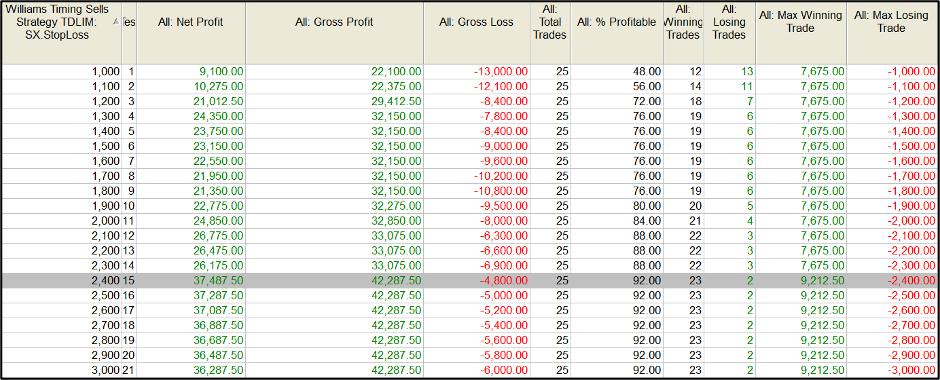 Table 3: S&P 500 E-minis 10 TDLM Stop Loss Test
Table 3: S&P 500 E-minis 10 TDLM Stop Loss Test
The answer is "not really". Sure, the $2,400 stop makes $200 more than the original stop I tested. Both, as they say, are good enough for government work or short-term traders.
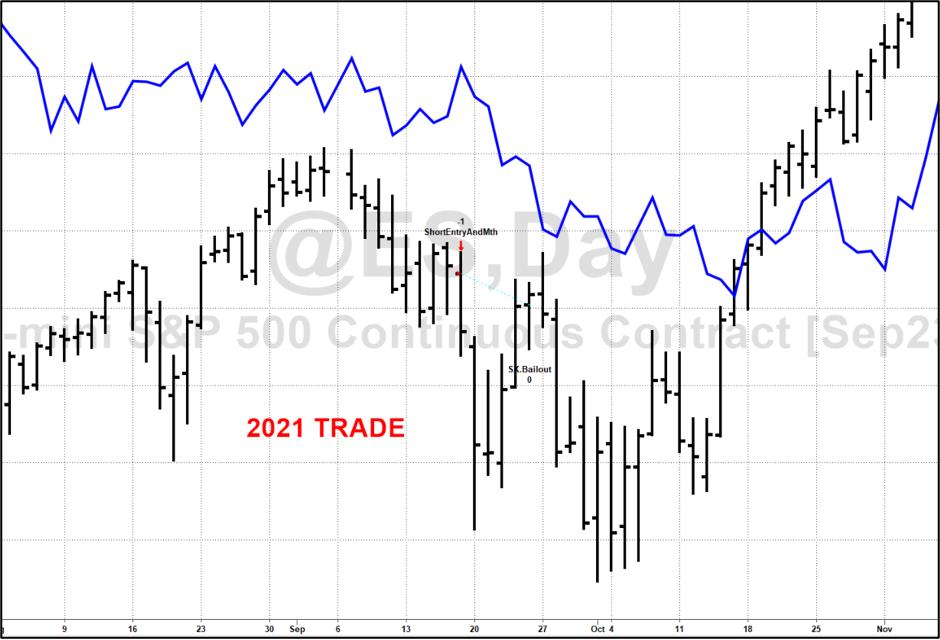 Chart 11: 10 Trading Days Left in the Month of September 2022
Chart 11: 10 Trading Days Left in the Month of September 2022
Chart 11 is last year's trade, with my True Seasonal in blue. This can give you a better feel of what has taken place in the past. Just go look at your charts and compare them with the table(s).
Finally, Chart 12 is the trade setup for 2023, with our Seasonal superimposed.
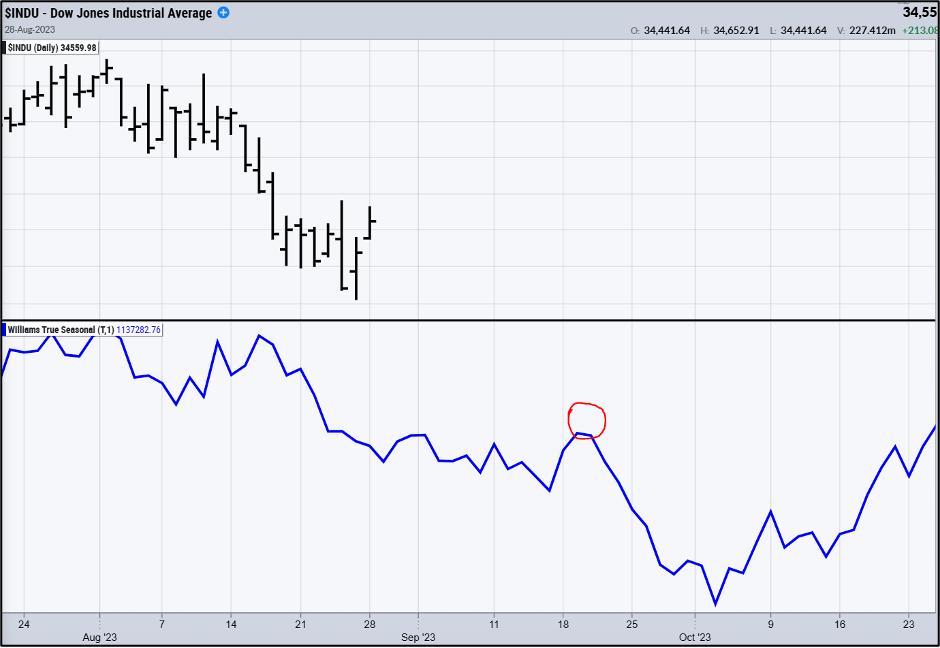 Chart 12: September Seasonal
Chart 12: September Seasonal
Long-Term Market Timing
Based on my cycle and fundamental studies, we are still in a bull market, and should remain so until at least late next year. I expect to see new highs.
Intermediate-Term Market Timing
With patience, I have been waiting for a market-buying opportunity in mid-to-late-September of this year. Here is an update on the current forecast. I fully expect stocks will follow the wave pattern seen here.
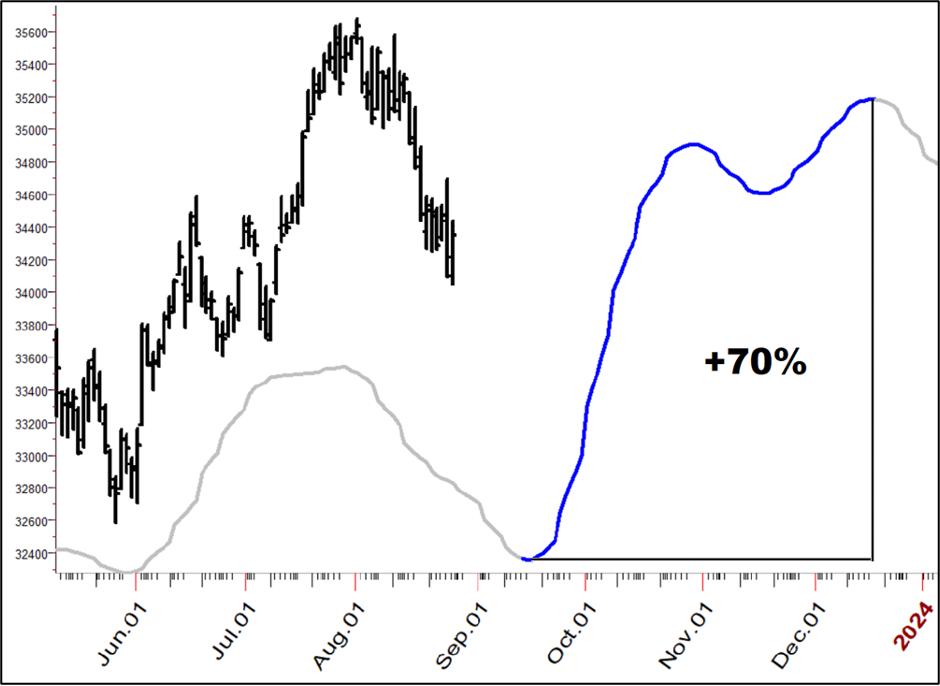 Chart 13: Pattern Stocks Should Follow
Chart 13: Pattern Stocks Should Follow
More importantly, we see a strong bias; since the 1880s, this wave has been profitable 70% of the time. Can I predict the exact day? I doubt it, but let's look at a few things that may help.
Stocks usually bottom on a Tuesday, and thus the 12th, 19th, and 26th are prime candidates. My hunch is a low on the 11th/12th with a bounce. Another excellent entry should be on about the 26th (as time runs out on a short-term sell you just read about).
What are You Waiting For, Larry?
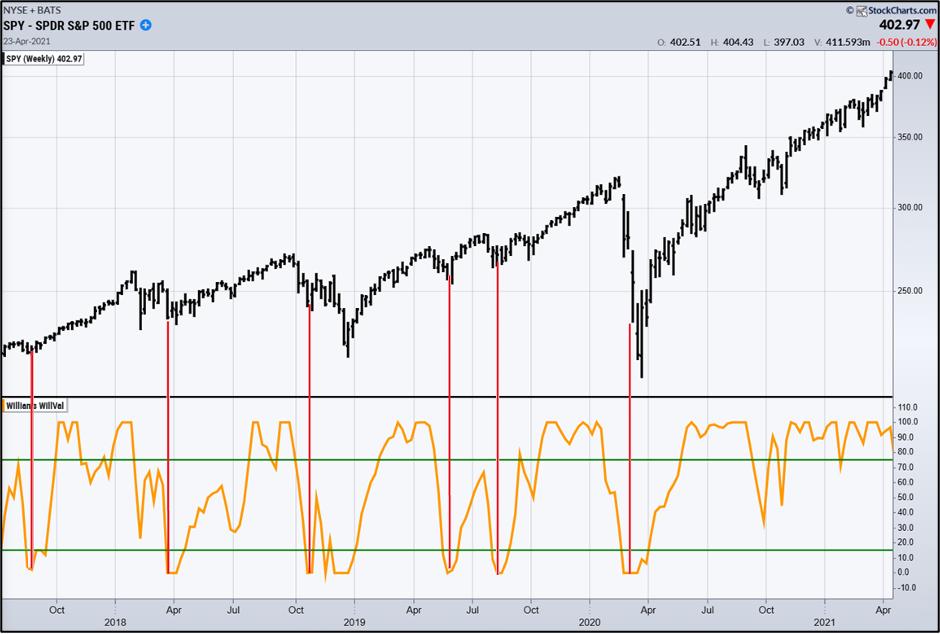 Chart 14: Valuation and Stocks
Chart 14: Valuation and Stocks
In Chart 14, we see the SPY vs. our Valuation Model in StockCharts. I have marked off each time the index has entered the undervalued zone. Its record is exemplary, considering this uses weekly data.
Chart 14 ends in 2021, so let's bring this 7-year window up to date.
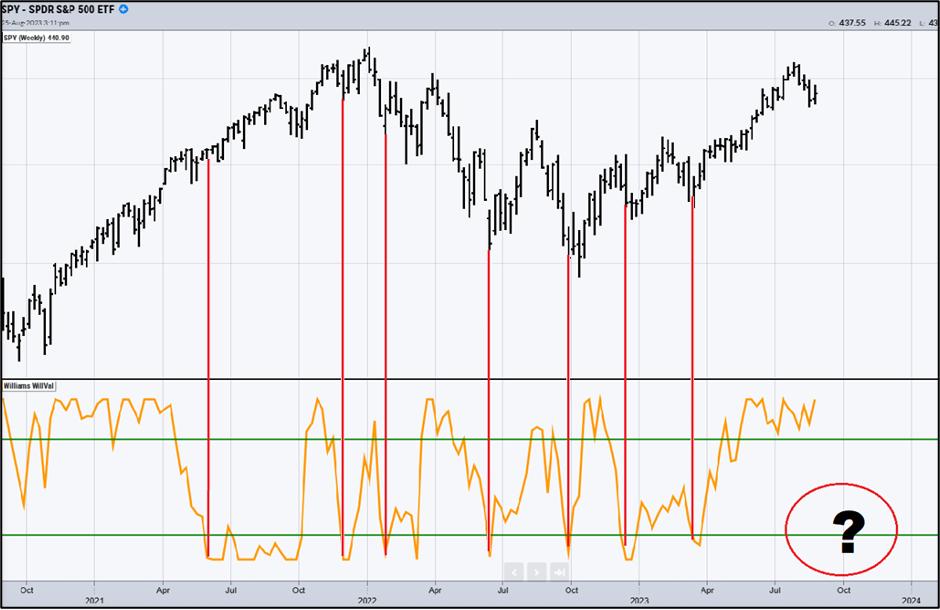 Chart 15: Current Valuation
Chart 15: Current Valuation
Here it is. Its ability to call very good buying points (even in uptrends as in the middle of 2021) has held up. Hence, those with patience will wait for the index to dip into the undervalued zone.
Focus On Specific Stocks
First, a Word on Entries...
I can help you in stock selection and market timing, but will bypass specific entries. In the past when I have given an exact entry point, everyone piled on. The results were not good; lots of slippage and an immediate move against our position as specialists adjusted their book.
What you should be looking for when price enters our buy area is to see a trend change to the upside. This might be:
1) Rising above a recent trend line
2) Getting above an X day moving average
3) Taking out the highest high of the last X days, usually 12-to-17
4) Students will most often use my WillStop or Willtrend tools
5) Other entry techniques you know and have used.
This Will Help You ...
I like to buy stocks that have been stronger than the general market averages. What do I mean by that, and how do I do it? Let's use the chart below to illustrate my points.
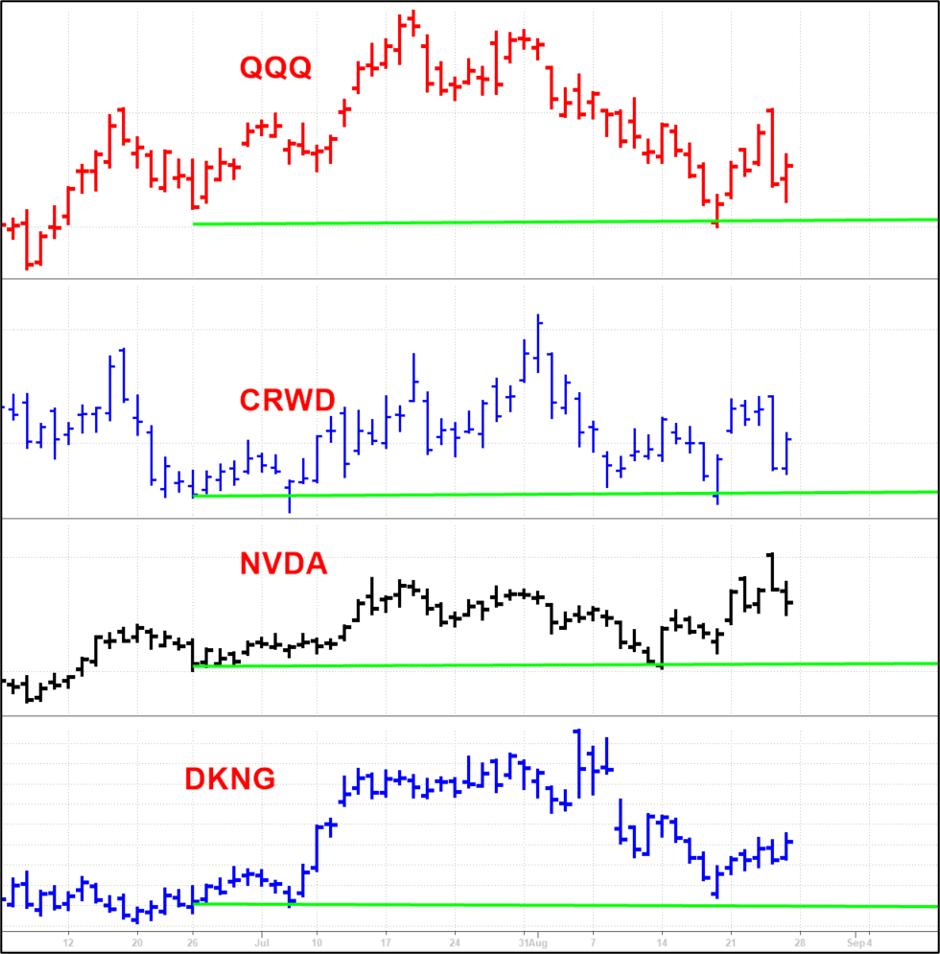 Chart 16: Comparative Strength
Chart 16: Comparative Strength
In red, you can see that the QQQ has been a good representation of what stocks on the NASDQ have been doing. Underneath that, I am showing some today's favorite "hot stocks". We can compare these to the average (QQQ).
I have drawn a green horizontal line across to the QQQ's June's low; we recently dropped back to that point. However, look at CRWD, NVDA, and DKNG. NVDA did not come even close to the June low; it was comparatively stronger. CRWD has matched the averages, while DKNG held above.
As we approach a buy point in September, you can apply this same thinking to whatever stocks you are following.
Speaking of DraftKings Inc. (DKNG)...
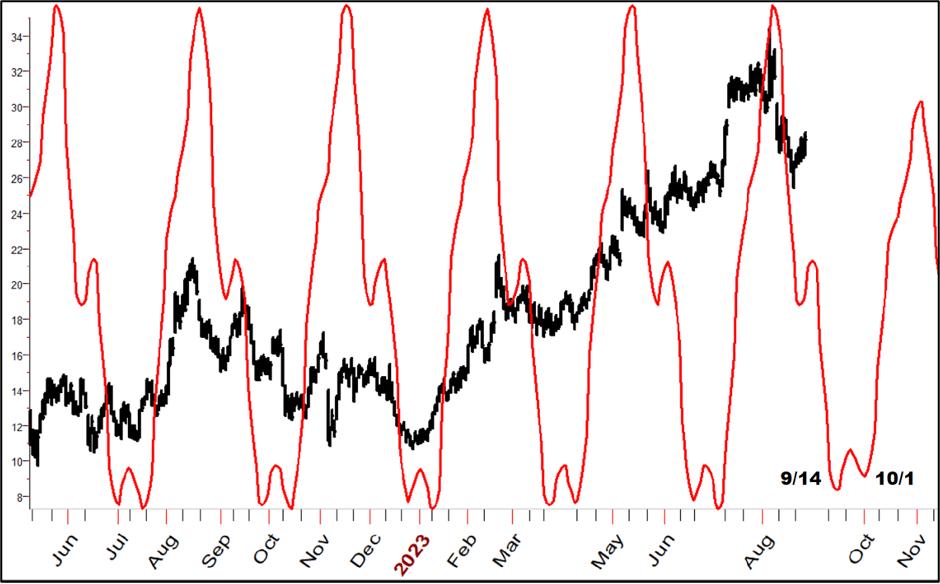 Chart 17: DraftKings Cycle
Chart 17: DraftKings Cycle
Chart 17 is my rally projection for DraftKings. Makes sense; they are a modern-day bookie, and the big betting for football has just begun.
Nvidia Corp. (NVDA)
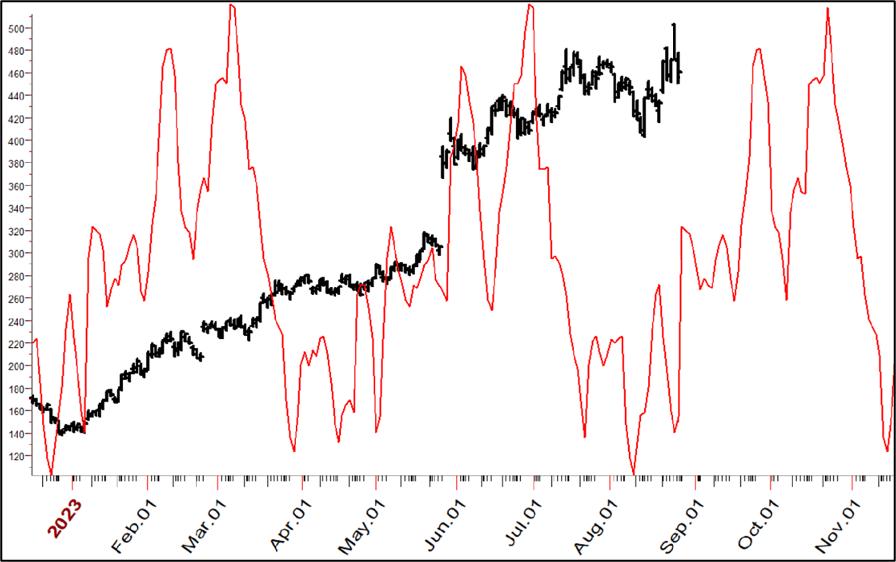 Chart 18: NVIDIA Cycle
Chart 18: NVIDIA Cycle
This has been a wild one, and I don't think that will change yet. The uptrend should continue starting in early September, with a strong rally leading into November.
Apple Inc. (AAPL)
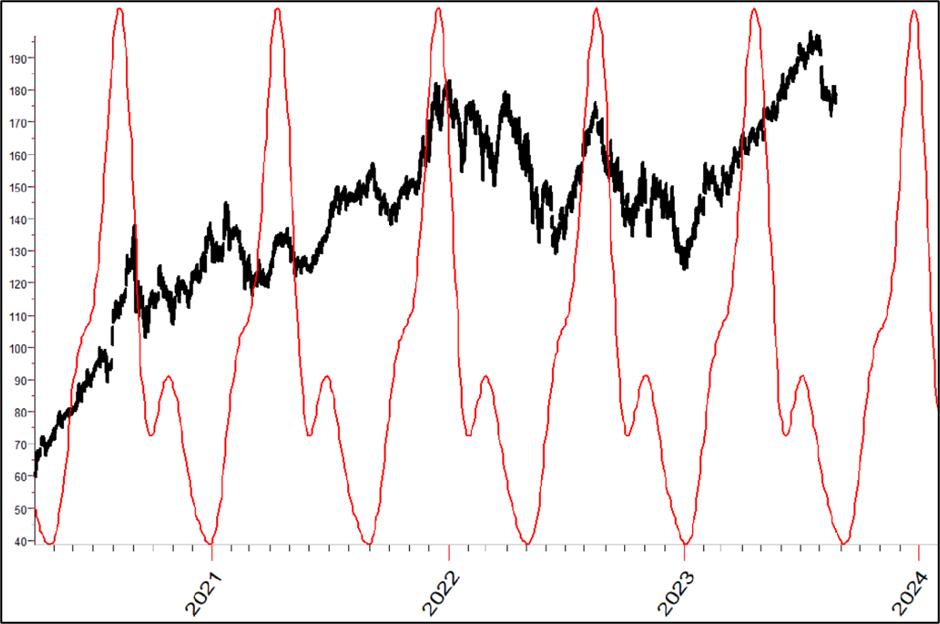 Chart 19: Apple Cycle
Chart 19: Apple Cycle
Apple is the kingpin stock and will remain so, as I see it. My studies suggest it's about time for a rally. The stock bounced well recently. Typically, important downtrend reversals in AAPL have been falling below the lowest low of the last 11 days. Going above the highest high of the last 11 days has been the buy. Lots of professional buying last week.
Rockwell Automation, Inc. (ROK)
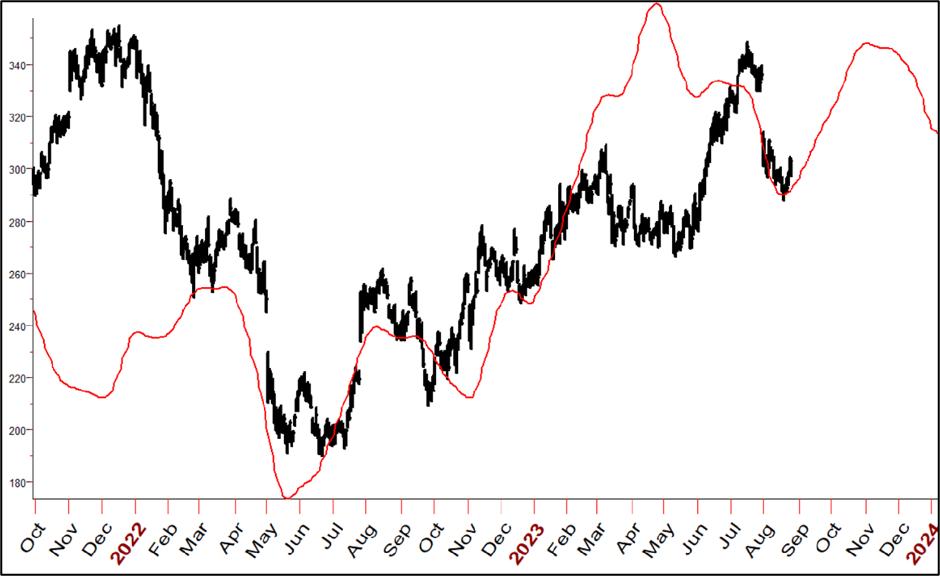 Chart 20: Rockwell Cycle
Chart 20: Rockwell Cycle
ROK is a very good long-term hold. Cycles are bullish here, and there is a gap to draw price back to the 325 area. Look for the formation of a higher short-term low and/or downtrend line for entry possibilities.
CrowdStrike Holdings, Inc. (CRWD)
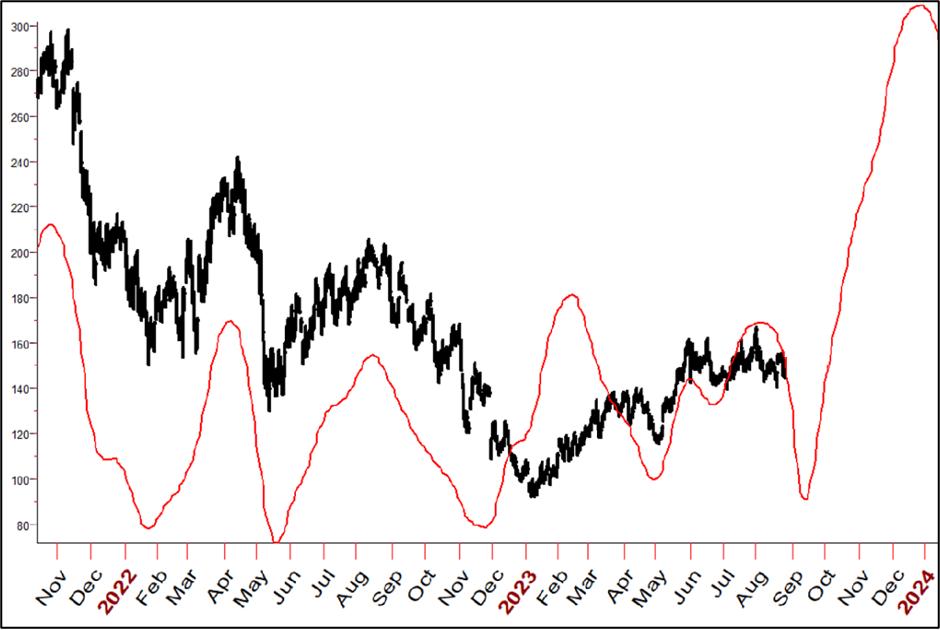 Chart 21: Crowdstrike Cycle
Chart 21: Crowdstrike Cycle
Cycles have worked well in this one. Earlier in the year, I did a forecast for one of Wall Street's heavy hitters that projected a rally at the end of June... just as it took place. Now I am looking for another rally. Chartists will note OBV has been very bullish here.
Walmart Inc. (WMT)
I have been intrigued by Walmart. It has been stronger, resisting the recent decline much better than its upscale counterpart Costco. Admittedly, the best seasonal time to buy this one is the first week in October. This year, WMT has been stronger than the seasonal pattern. So let's see what cycles are telling us.
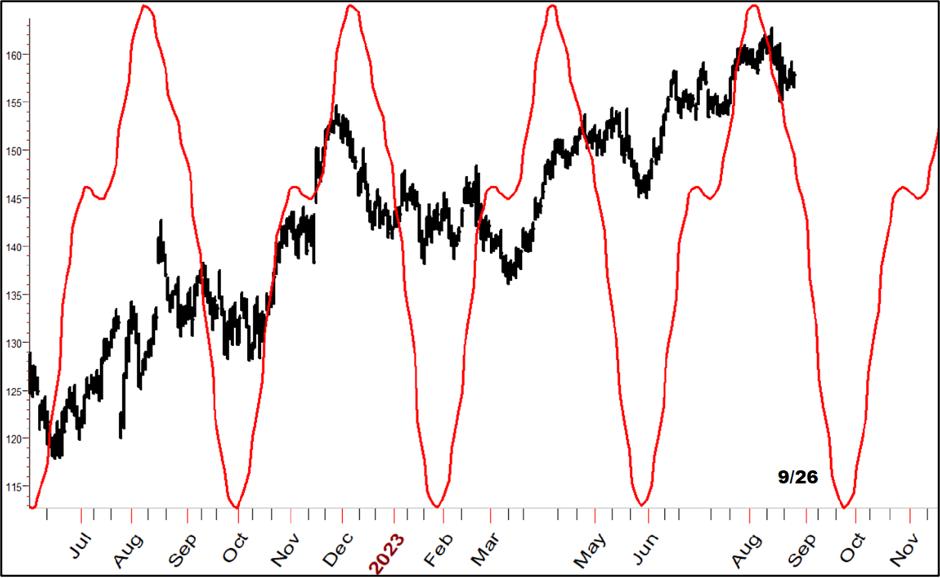 Chart 22: Walmart with 120-Day Cycle
Chart 22: Walmart with 120-Day Cycle
My study of the world's greatest retailer shows a 120-day cycle has been the most operative in this stock, as seen in this most recent chart. The next chart shows the consistency of the pattern back to 2021.
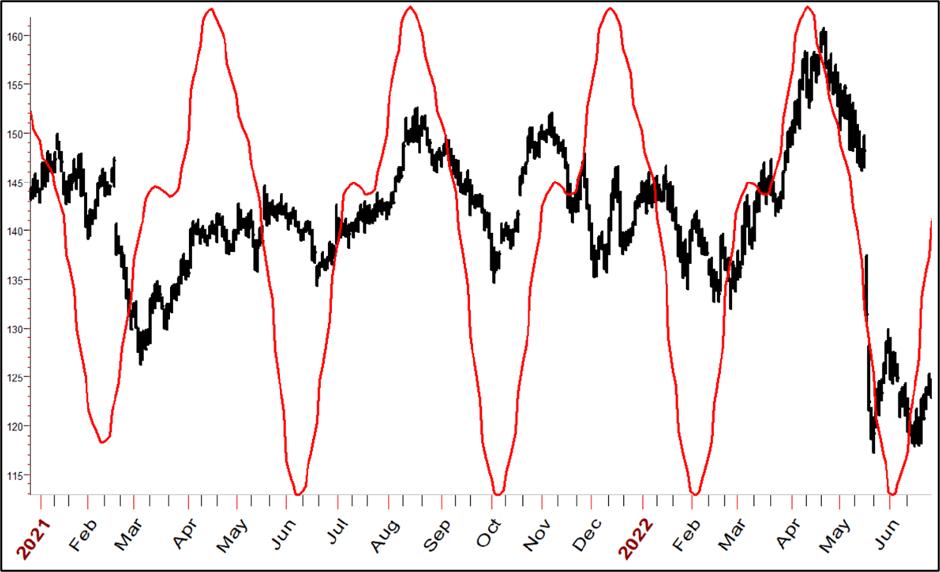 Chart 23: Walmart with 120-Day Cycle
Chart 23: Walmart with 120-Day Cycle
Look to position Walmart stock this month.
ServiceNow, Inc. (NOW) and Adobe Inc. (ADBE)
There are two more stocks poised to rally in September, NOW and ADBE. Here are the charts with cycle projections.
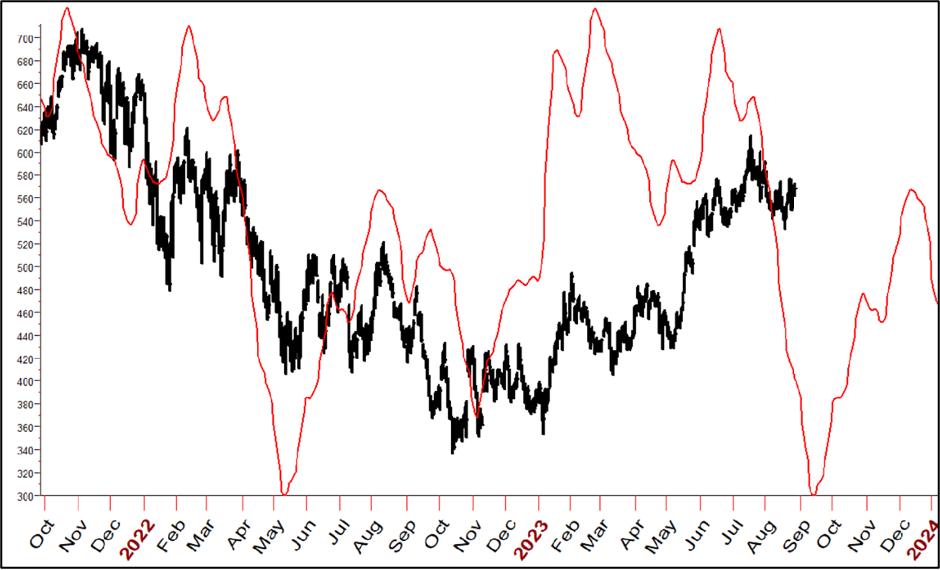 Chart 24: ServiceNow Cycle
Chart 24: ServiceNow Cycle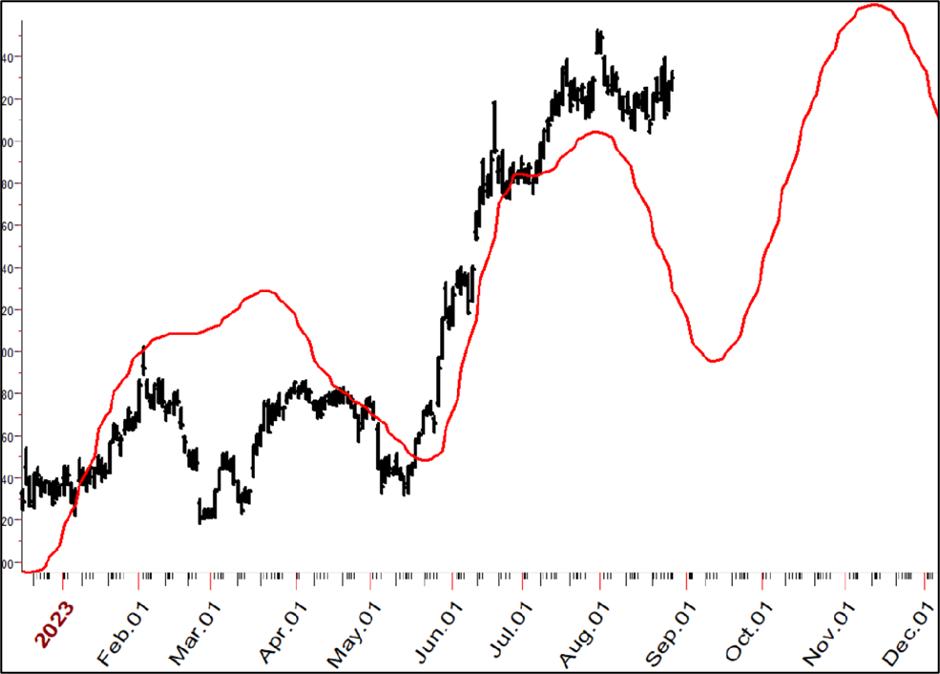 Chart 25: Adobe Cycle
Chart 25: Adobe Cycle
Closing Comments...
Well, well... we are through our first two months of this letter! I hope you enjoyed, learned, and profited from it.
Starting in October, it will no longer be free. So it's time for you to decide if you want to keep me working for you. I will still do some free stuff for you with StockCharts, but only occasionally. I want to focus my energy on this letter and our live monthly meetings.
The free trial ends October 1, 2023. To sign up, please visit https://www.stockcharts.com/larry
With my wishes to you for good luck and good trading,
Larry
If you have questions for Larry that you'd like addressed in future postings, please email familygathering@stockcharts.com.



